Abstract
This paper describes observations made both on laboratory colonies in London and on wild-caught material in the field of insecticide-susceptible and -resistant strains of A. gambiae, A. sundaicus and A. stephensi. The techniques used in assessing the susceptibilities of both larvae and adults are described and the effects of species, rearing, age, sex, feeding and ovarian development on susceptibility are discussed. The effect of continued selection by DDT in the laboratory of a presumably homogeneous susceptible strain of A. stephensi is then outlined and the phenomenon of “vigour tolerance” demonstrated.
Specific, monofactorially-inherited resistance is then described as witnessed with A. gambiae and A. sundaicus. A. gambiae shows a high degree of resistance to dieldrin and cross-resistance to the related cyclodiene compounds and gamma-BHC, but remains susceptible to DDT. Resistance is due to a single gene, partially dominant, the hybrid showing a moderate degree of resistance. A. sundaicus shows a moderate degree of resistance to DDT and cross-resistance to DDT analogues, but remains susceptible to dieldrin and gamma-BHC. Resistance is again due to a single gene but here it is virtually recessive and the hybrid is to all intents and purposes susceptible. The discriminating dosage technique for distinguishing the phenotypes in these species is described.
Resistance in other anophelines and in houseflies is discussed and suggestions made as to methods of detecting anopheline resistance in the field.
Full text
PDF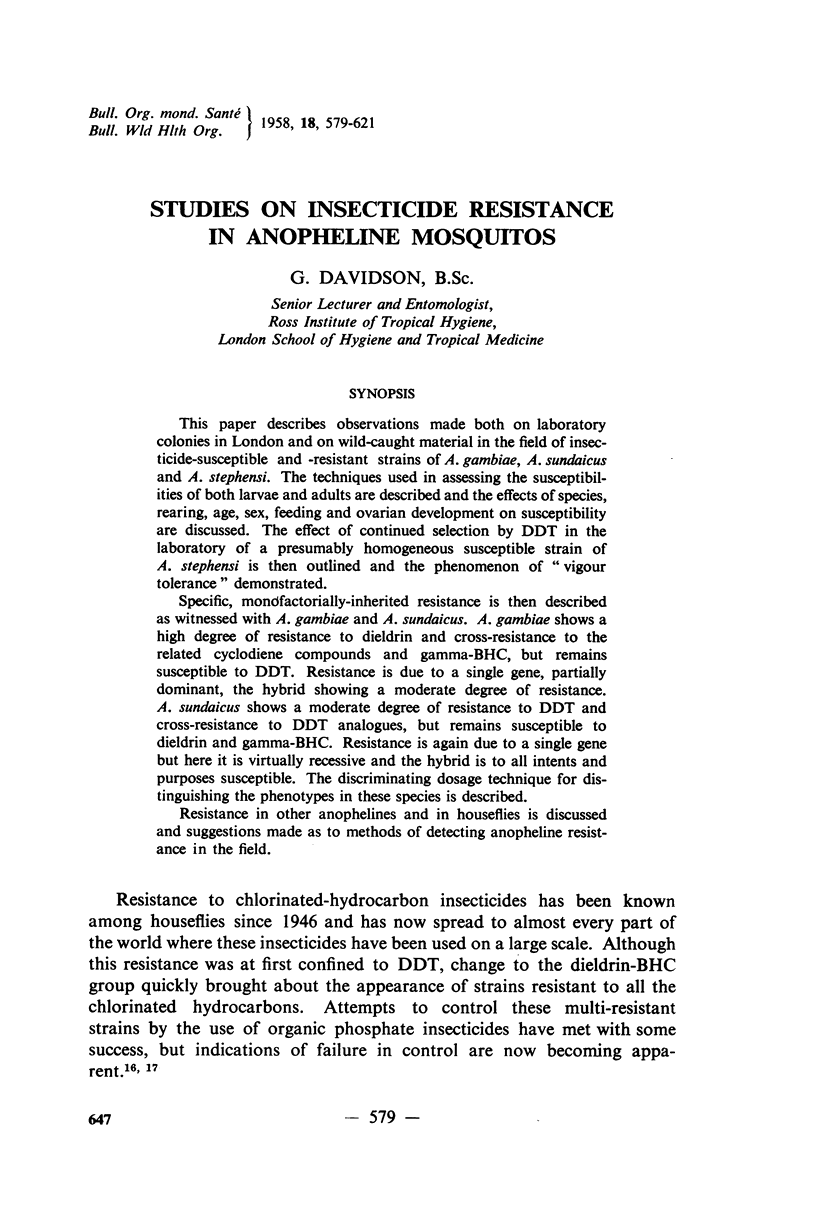

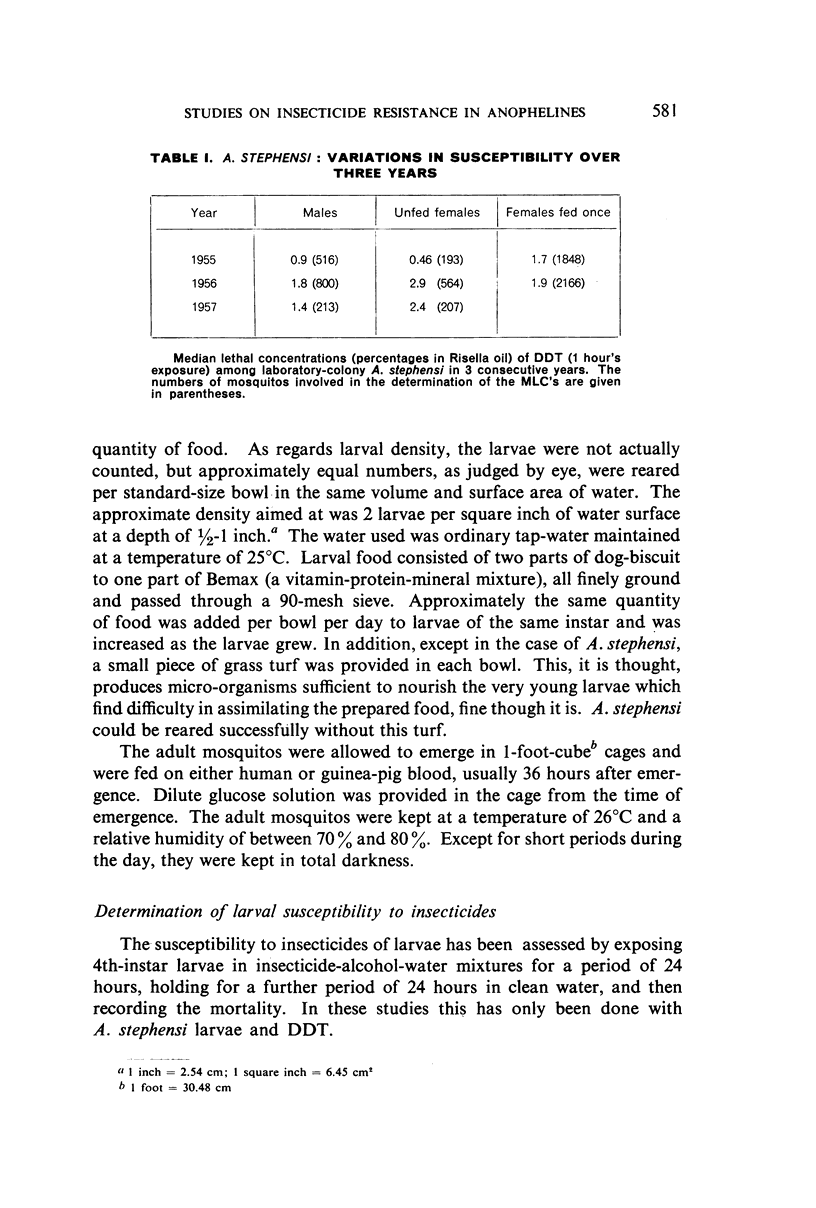
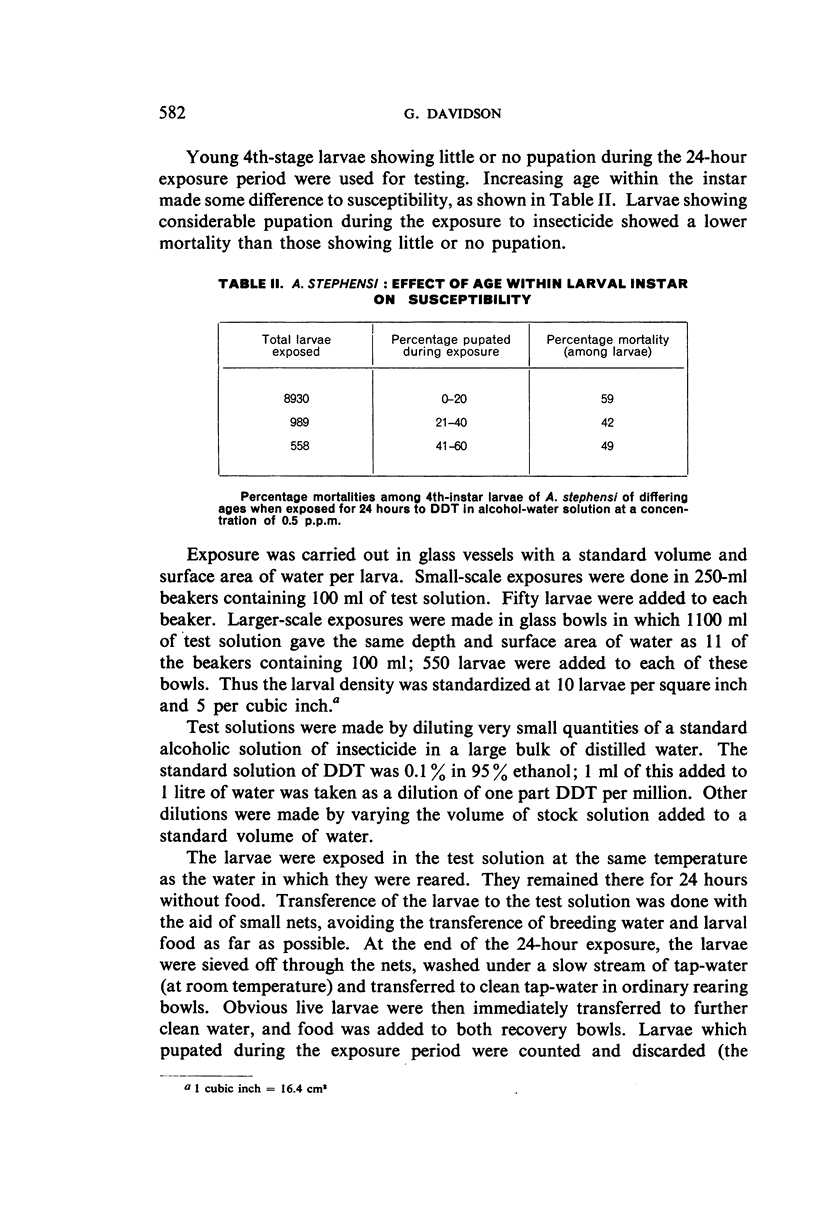
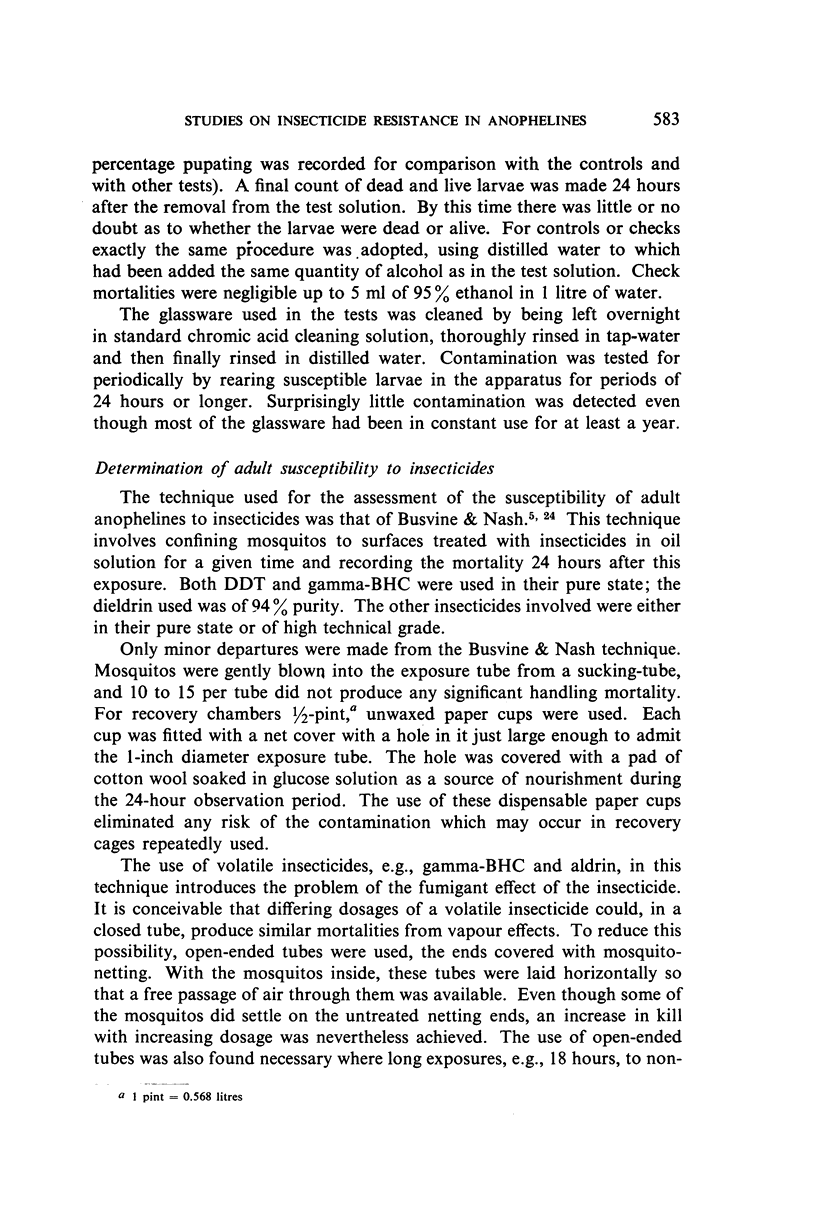


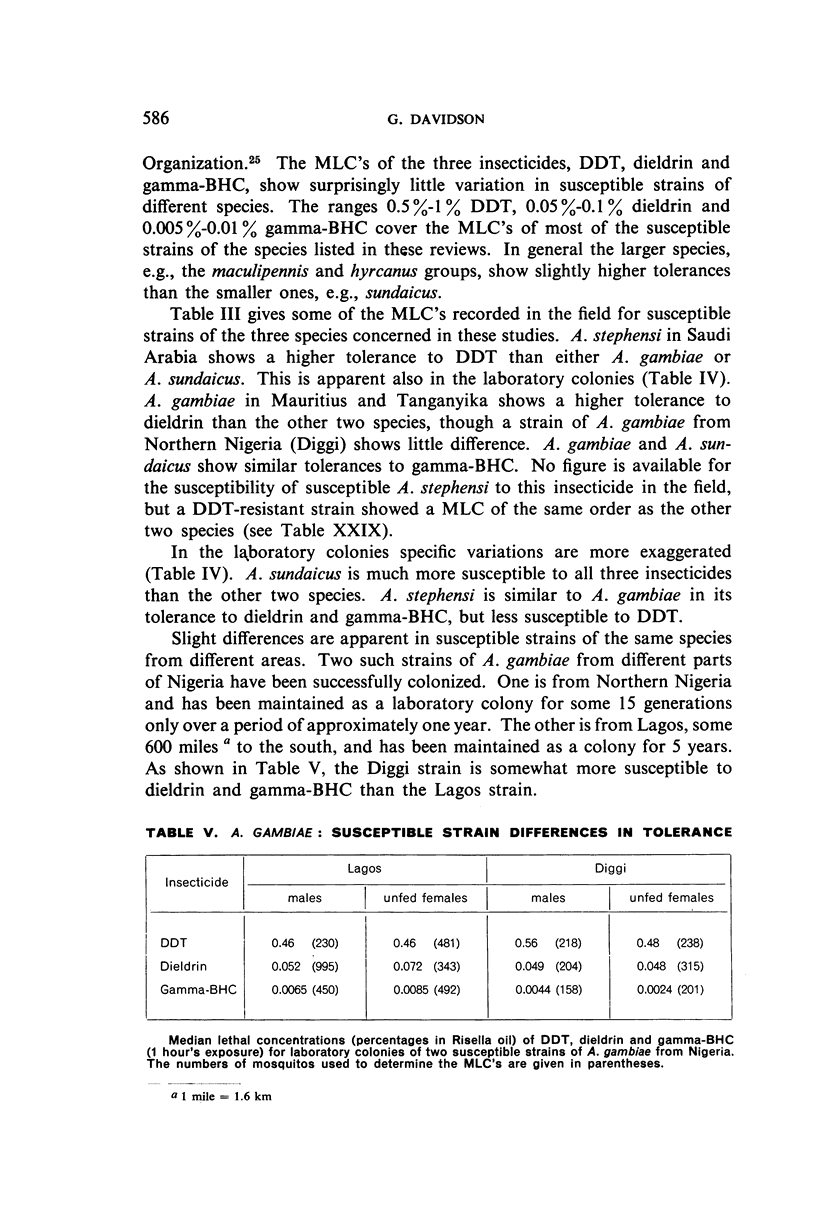

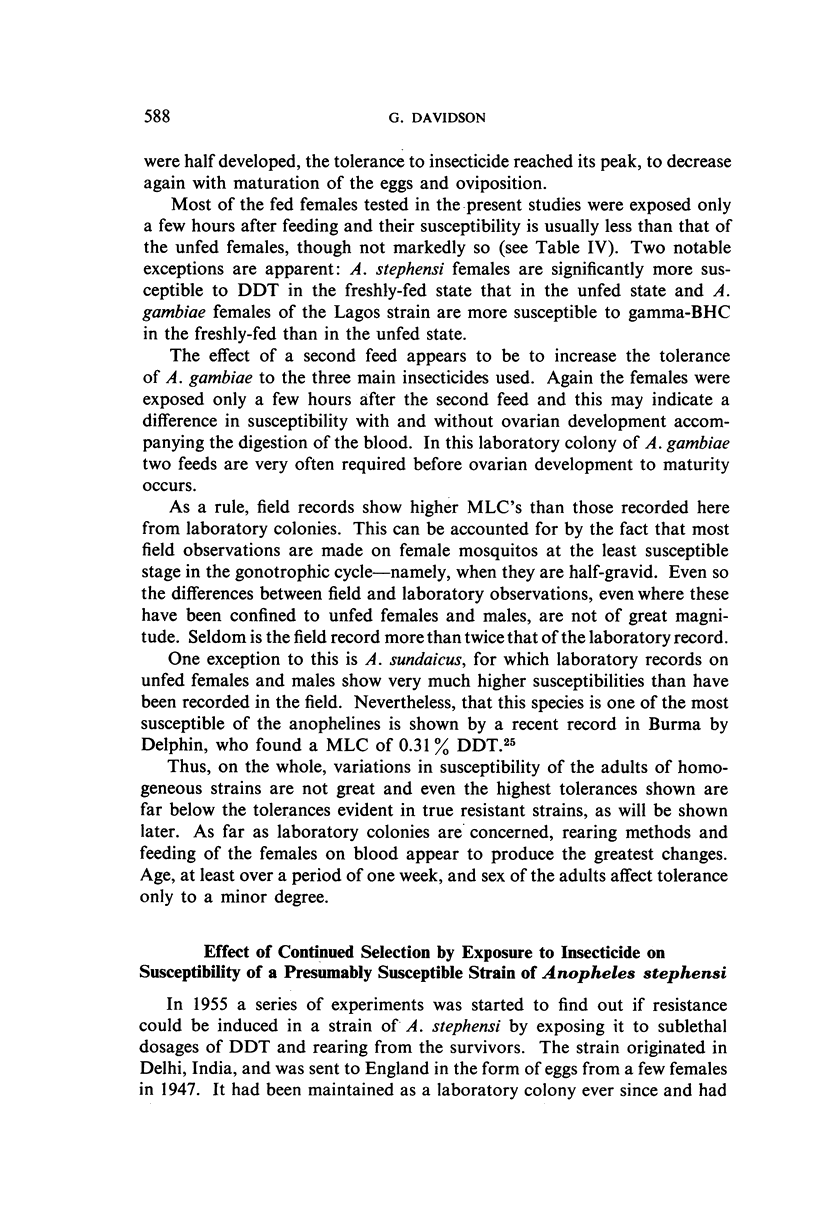

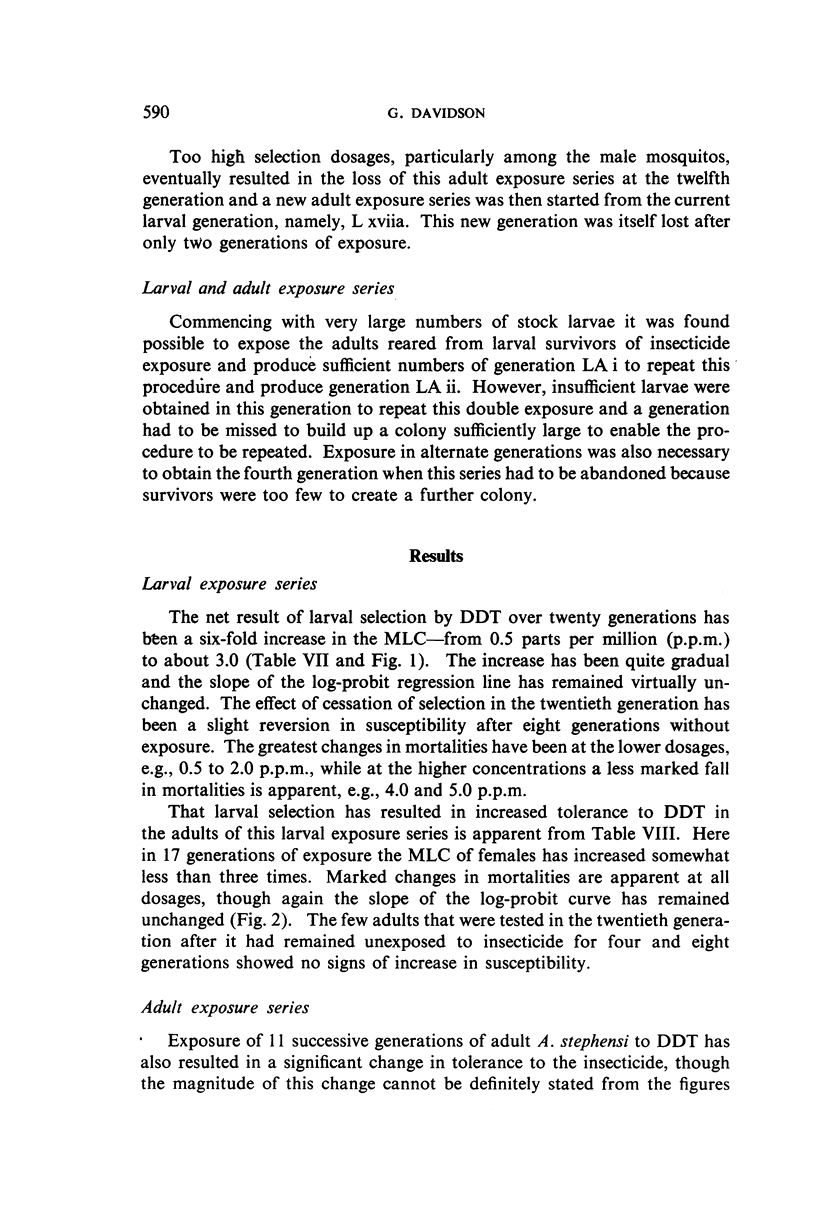
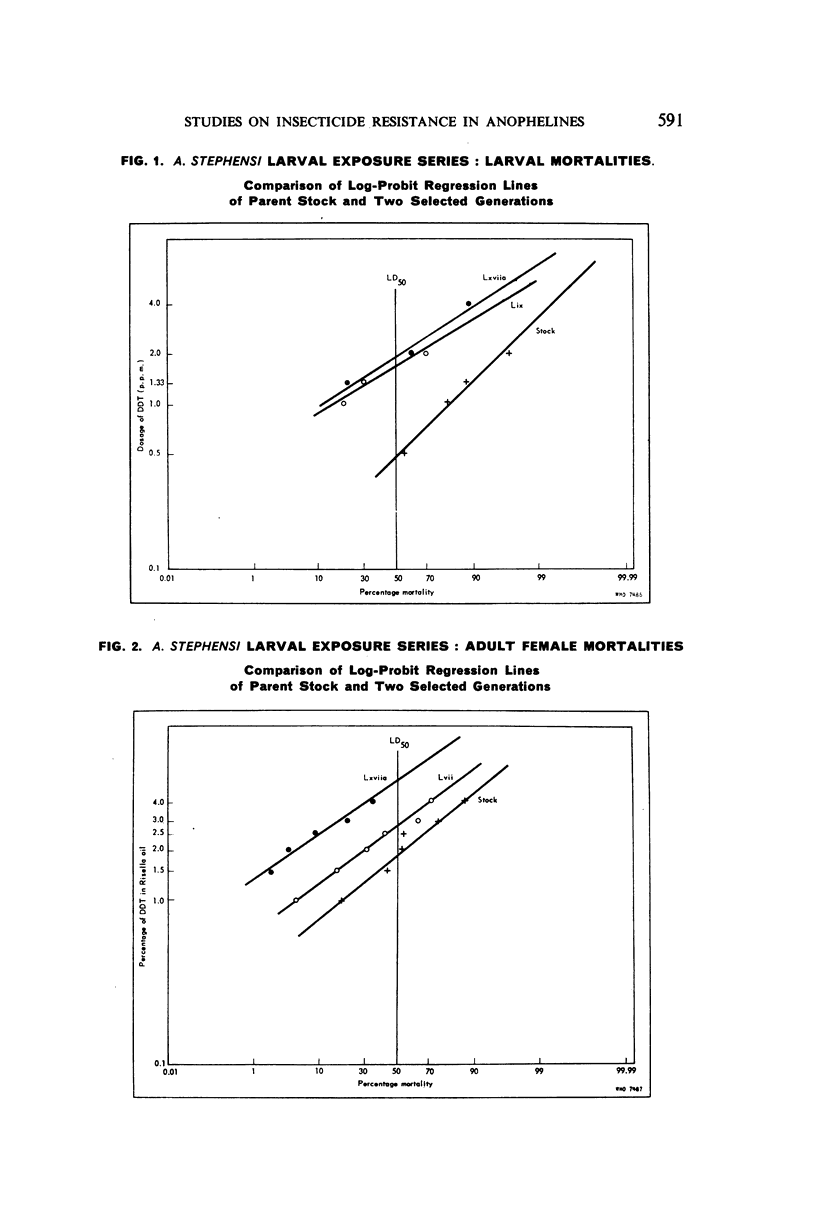
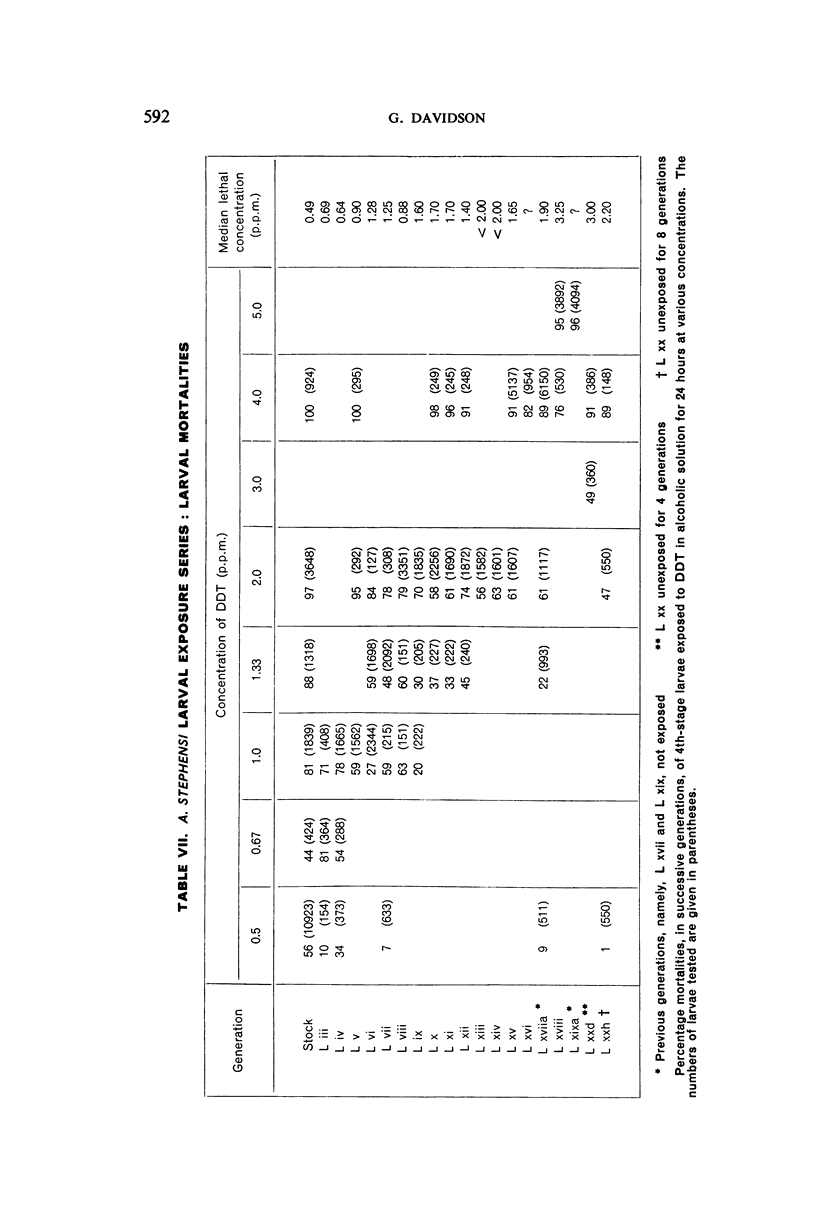
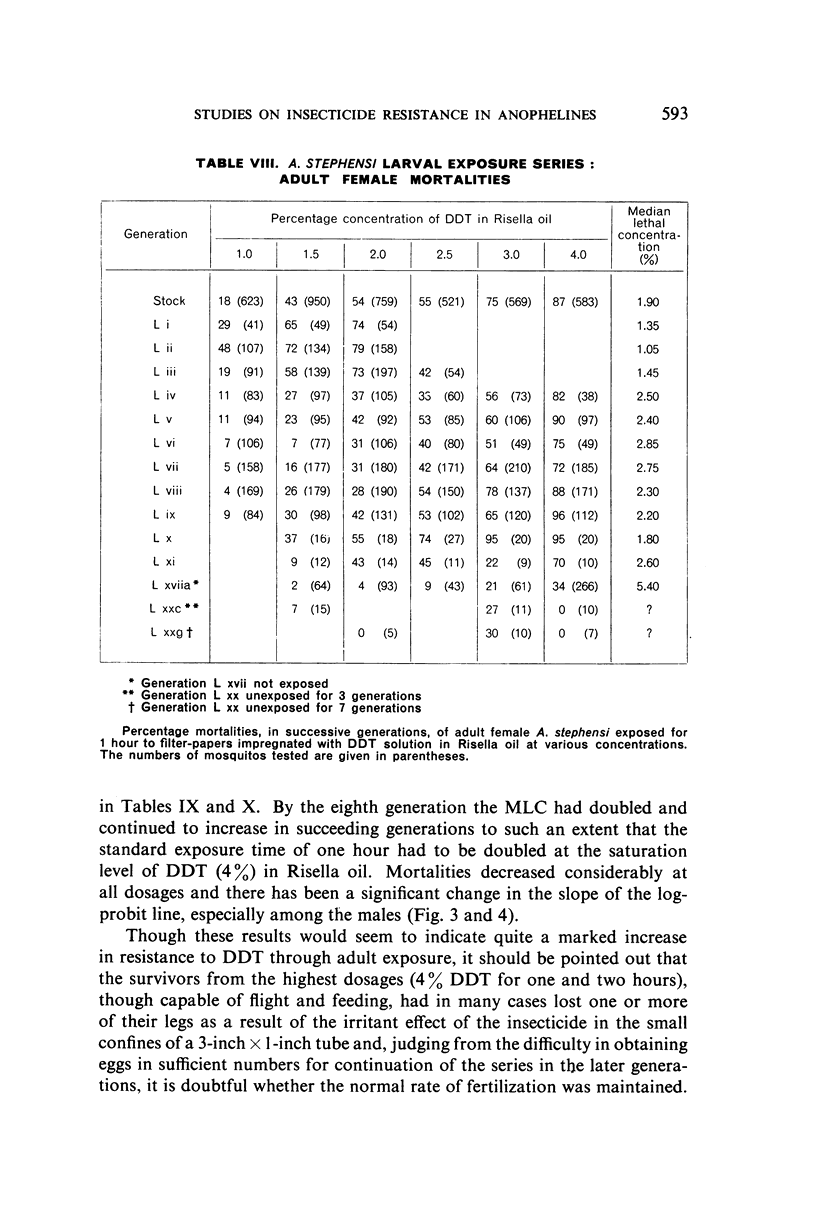
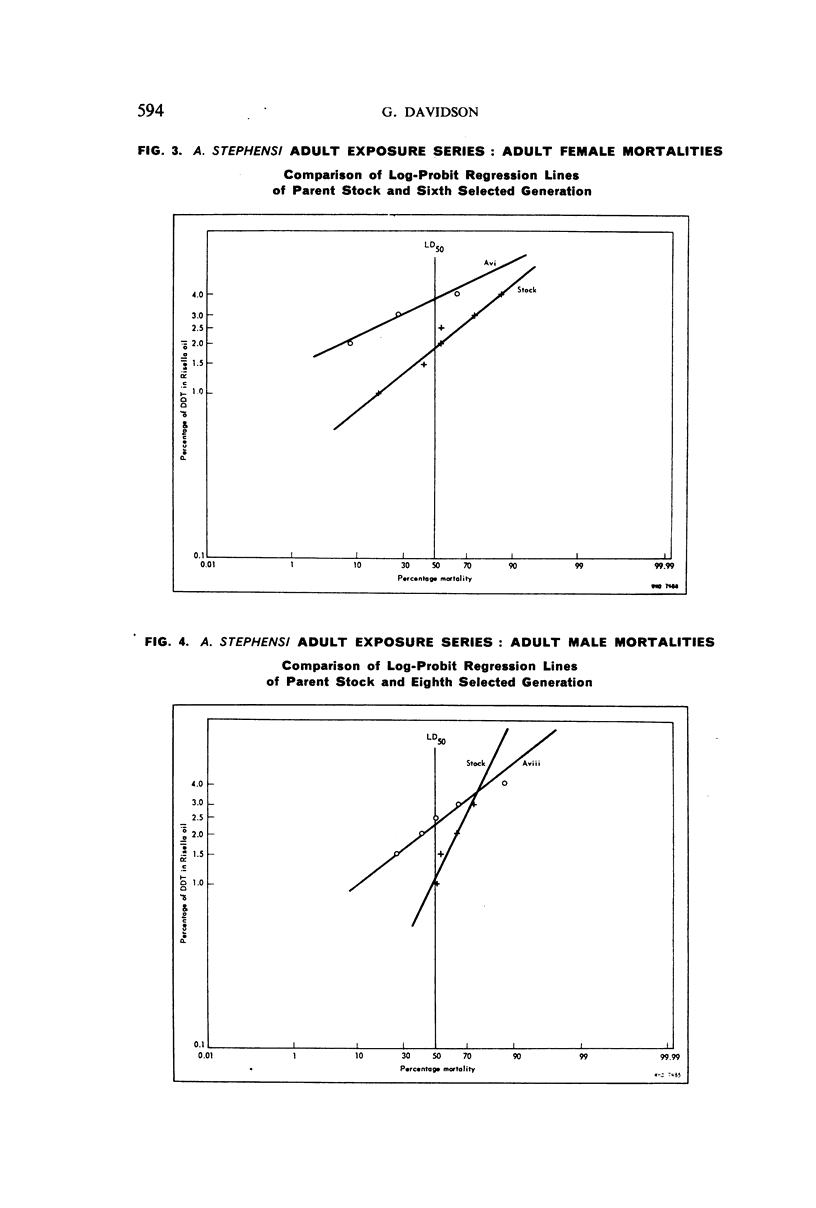
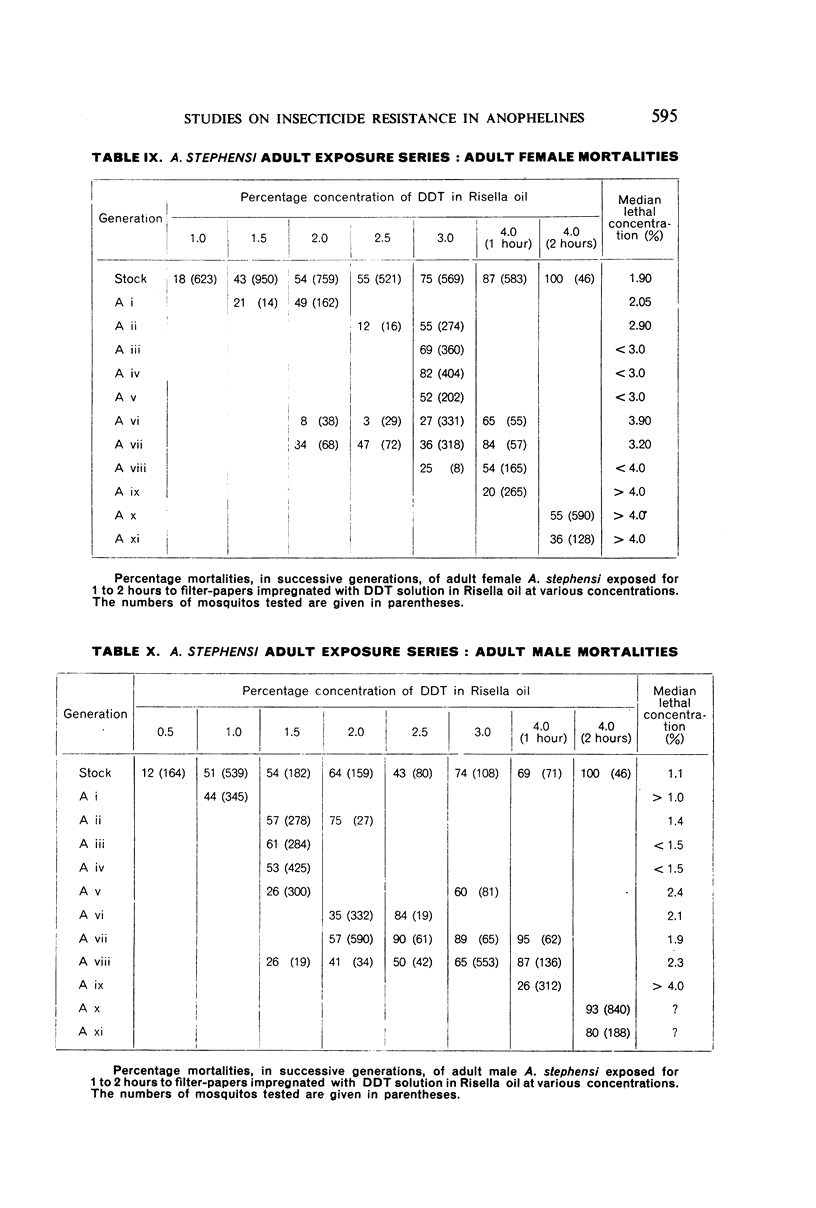
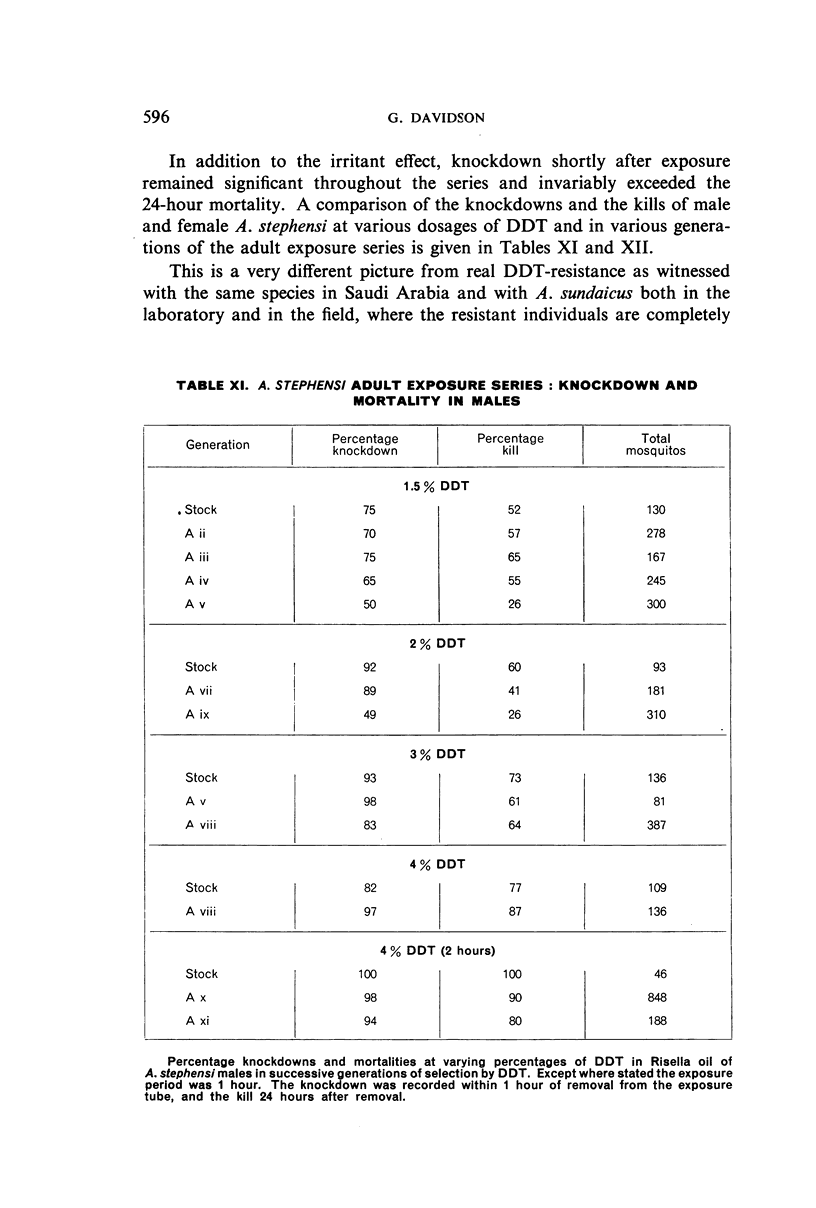
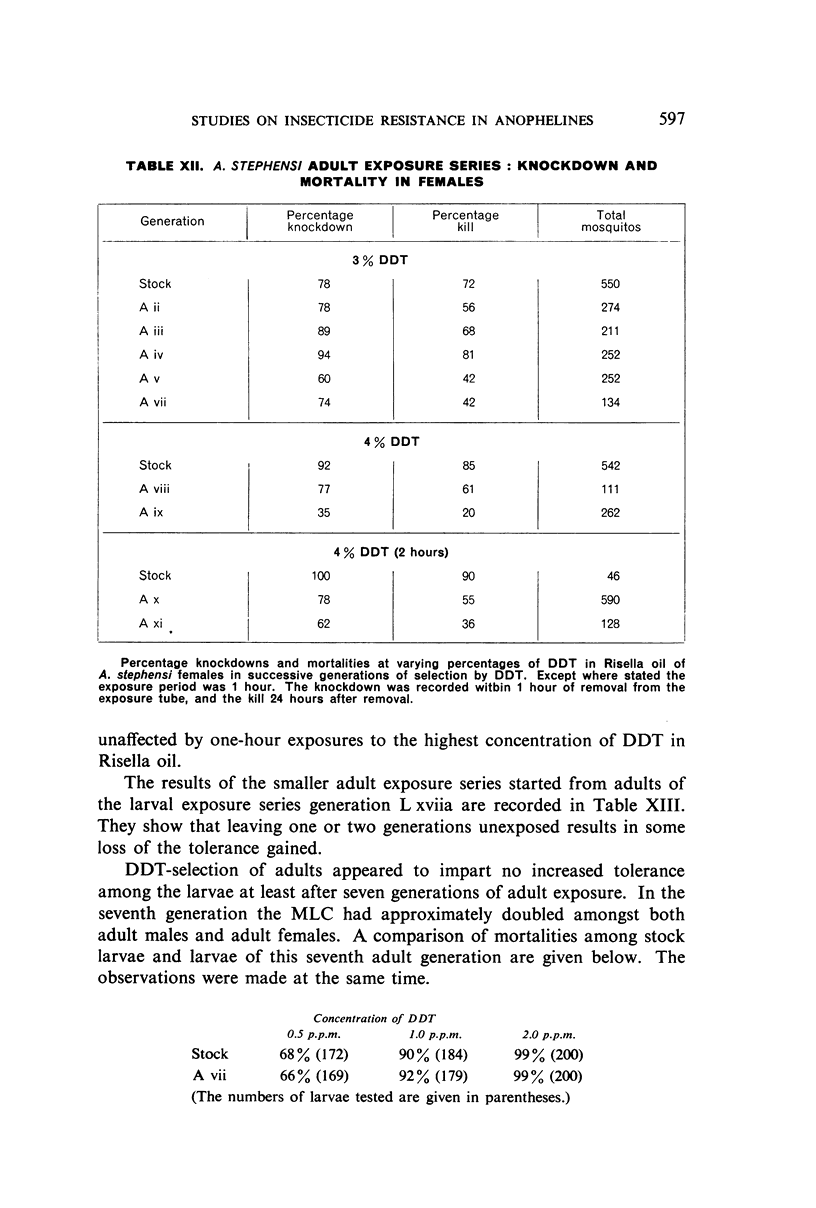
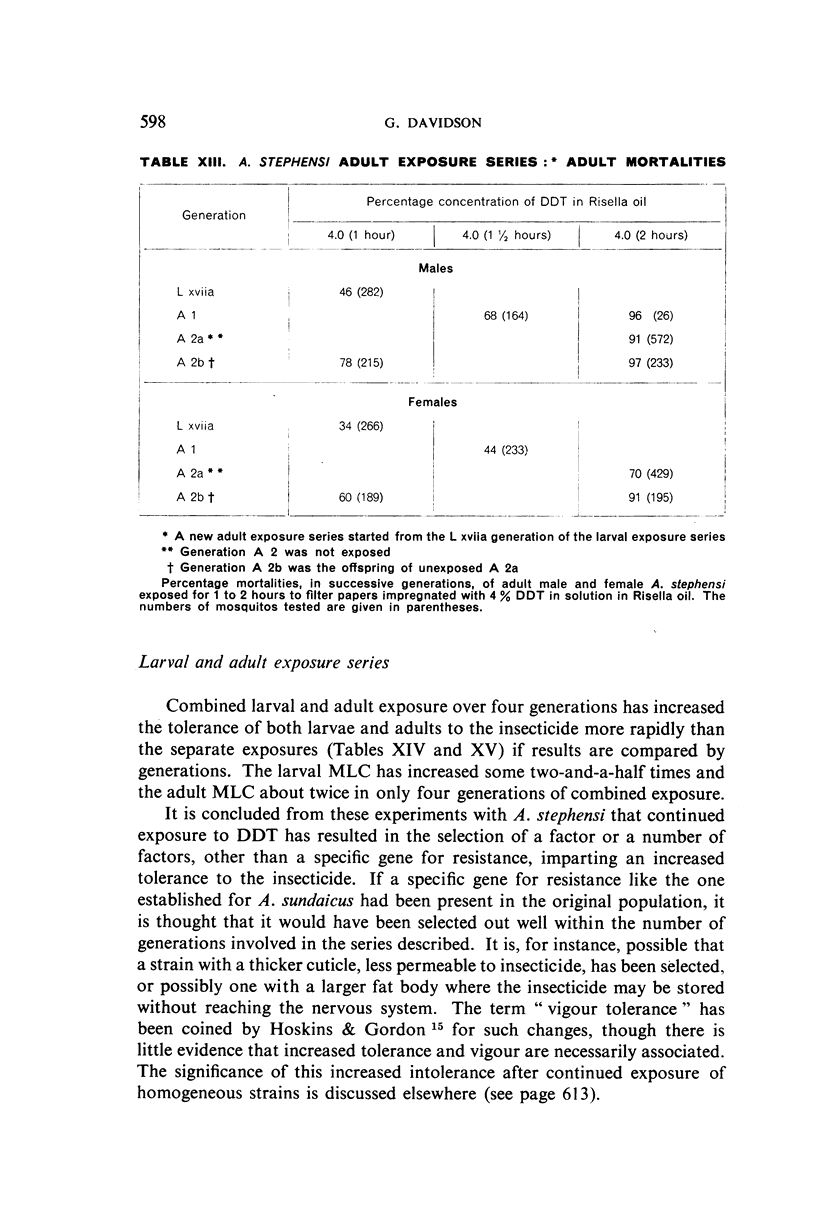
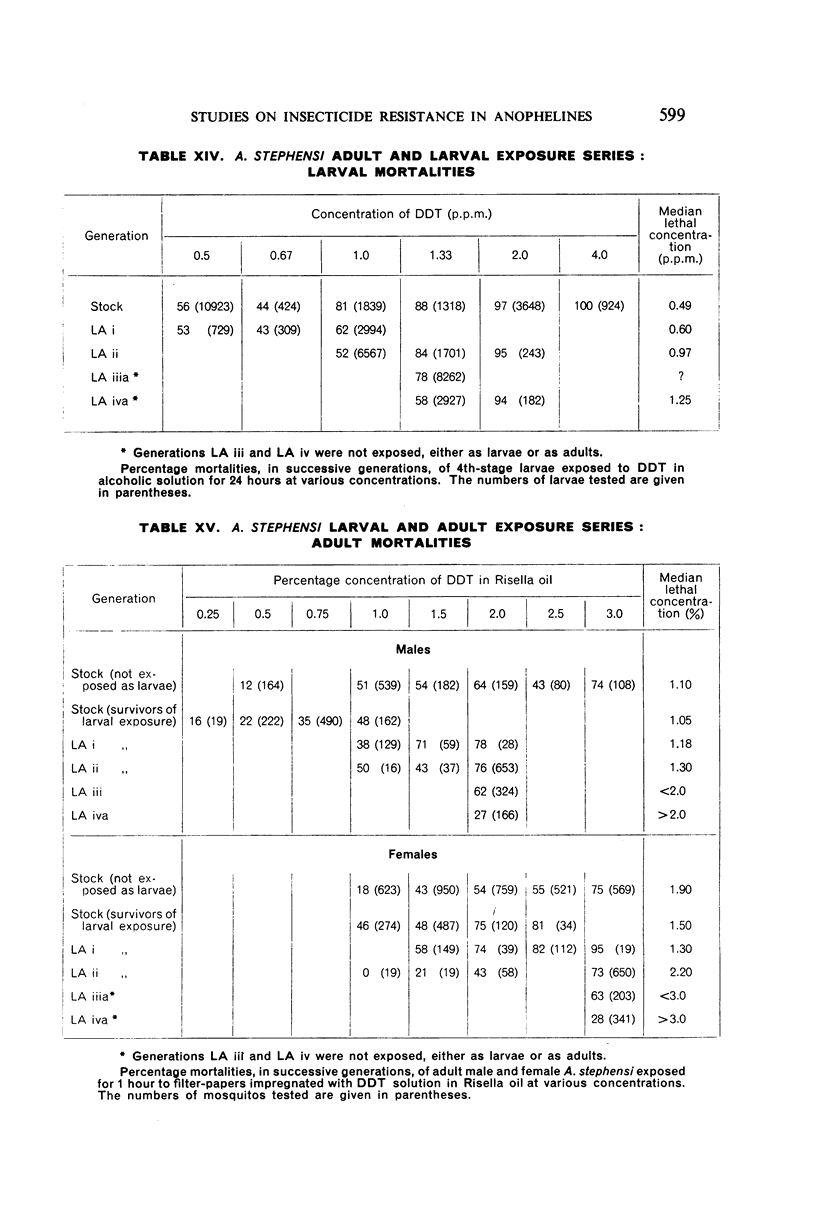
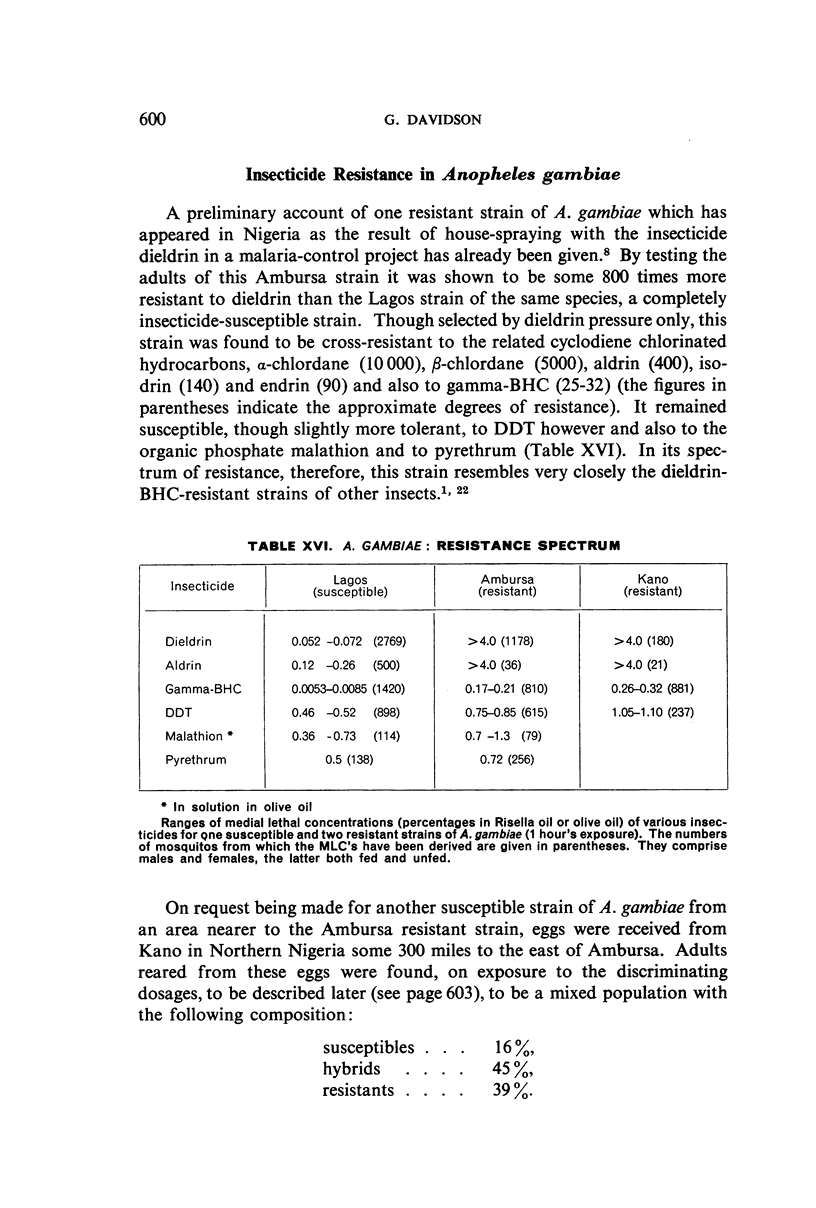
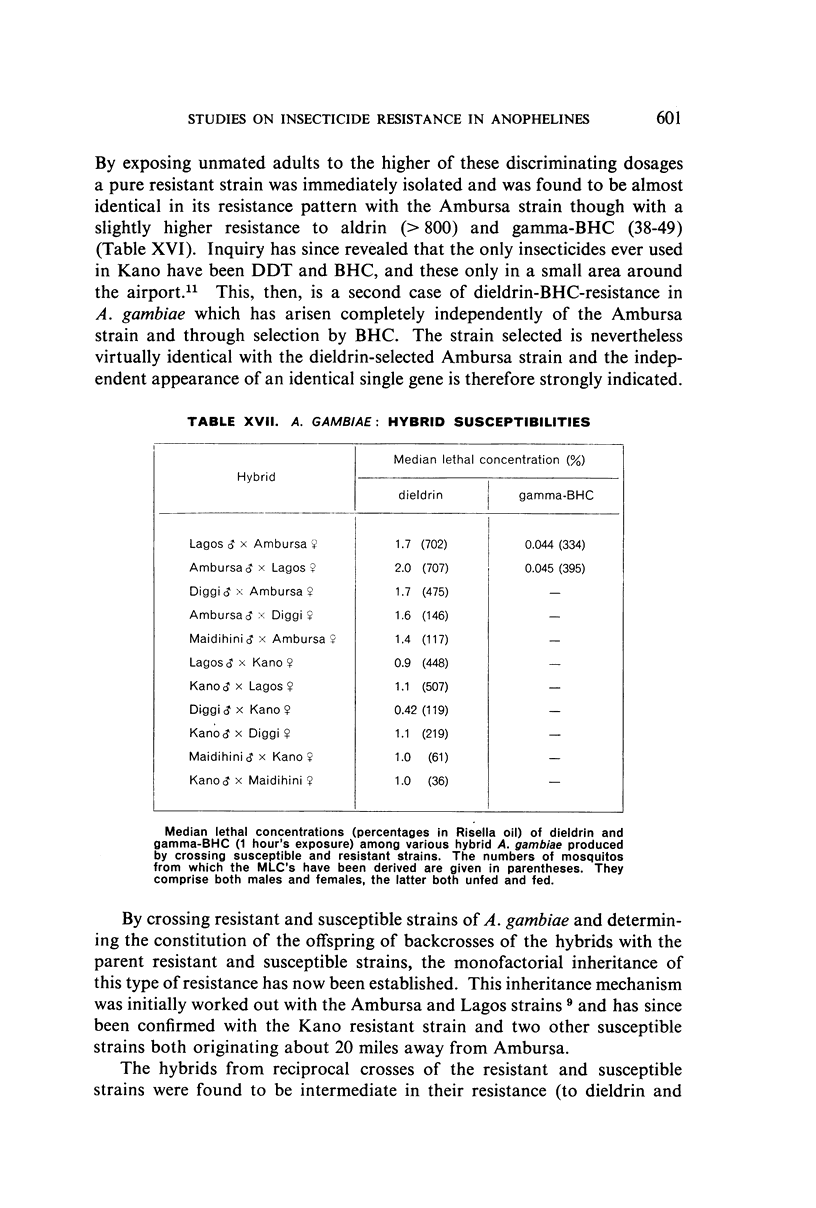
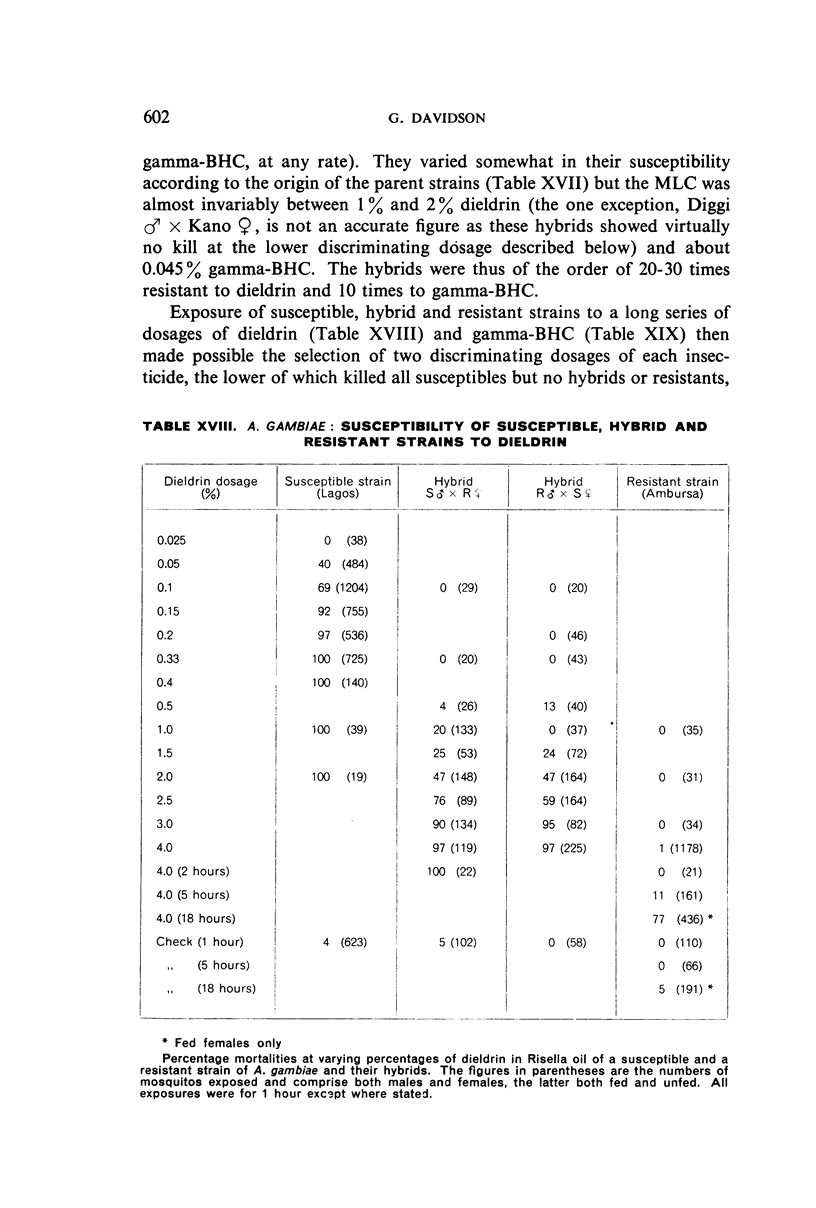
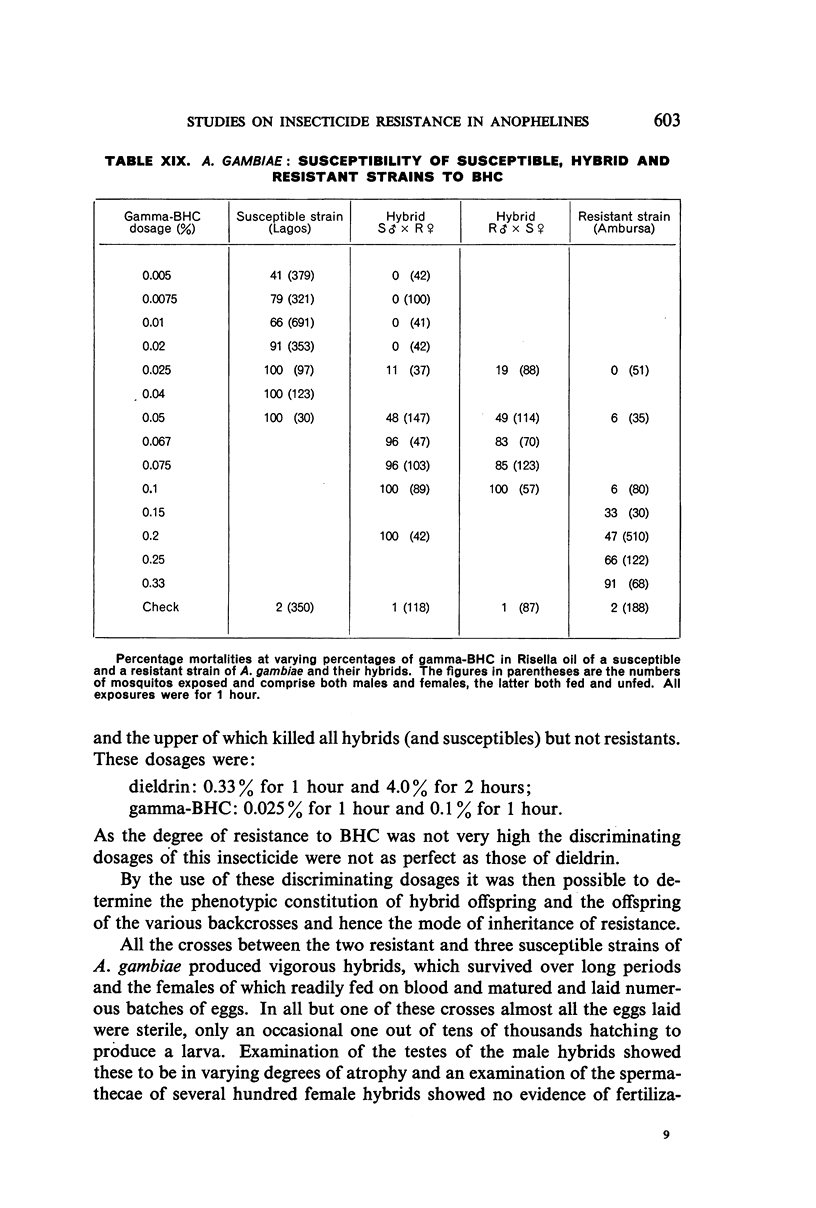
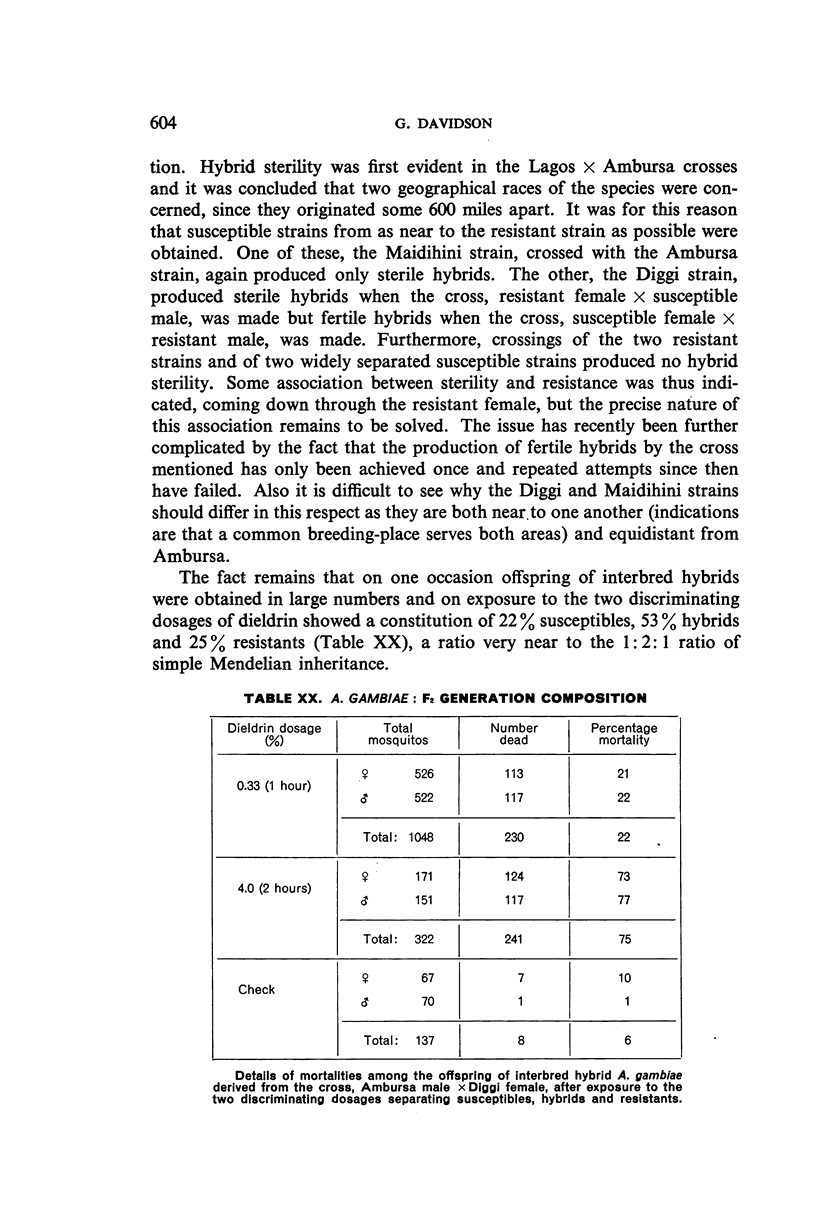
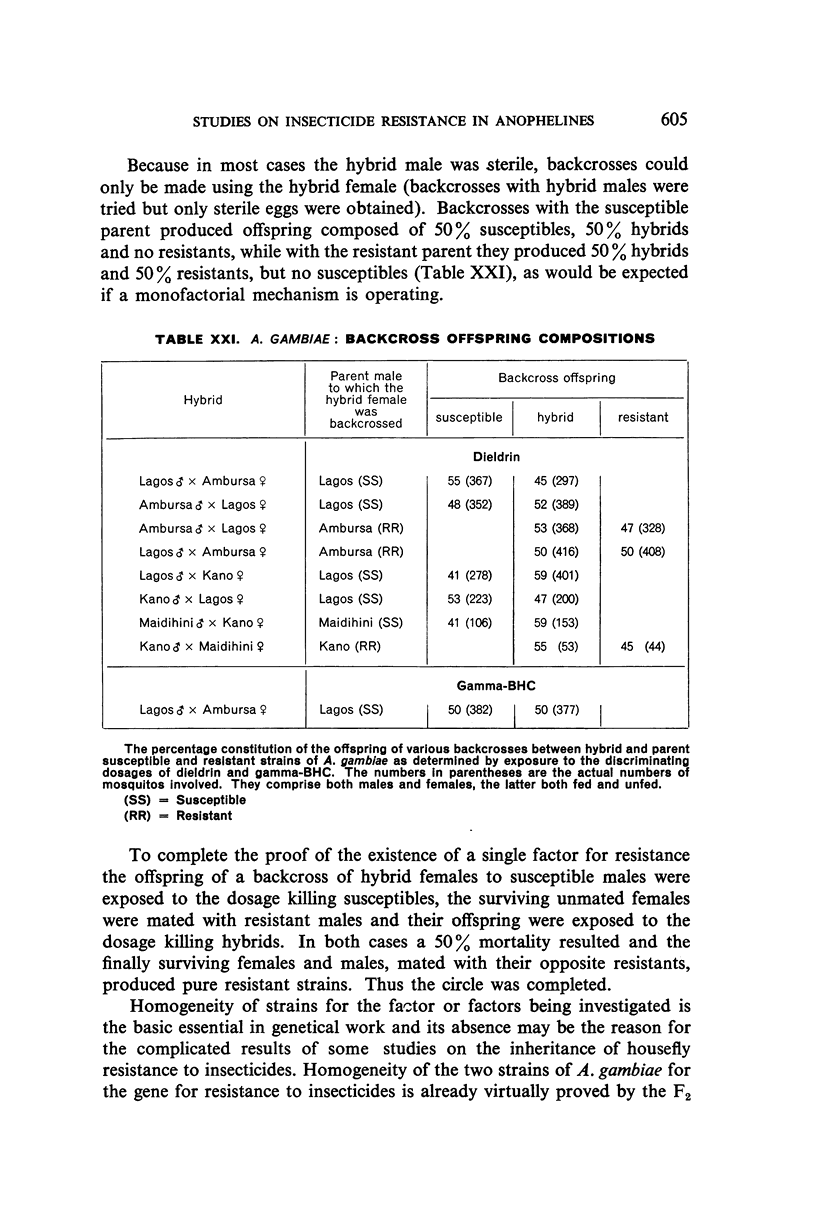
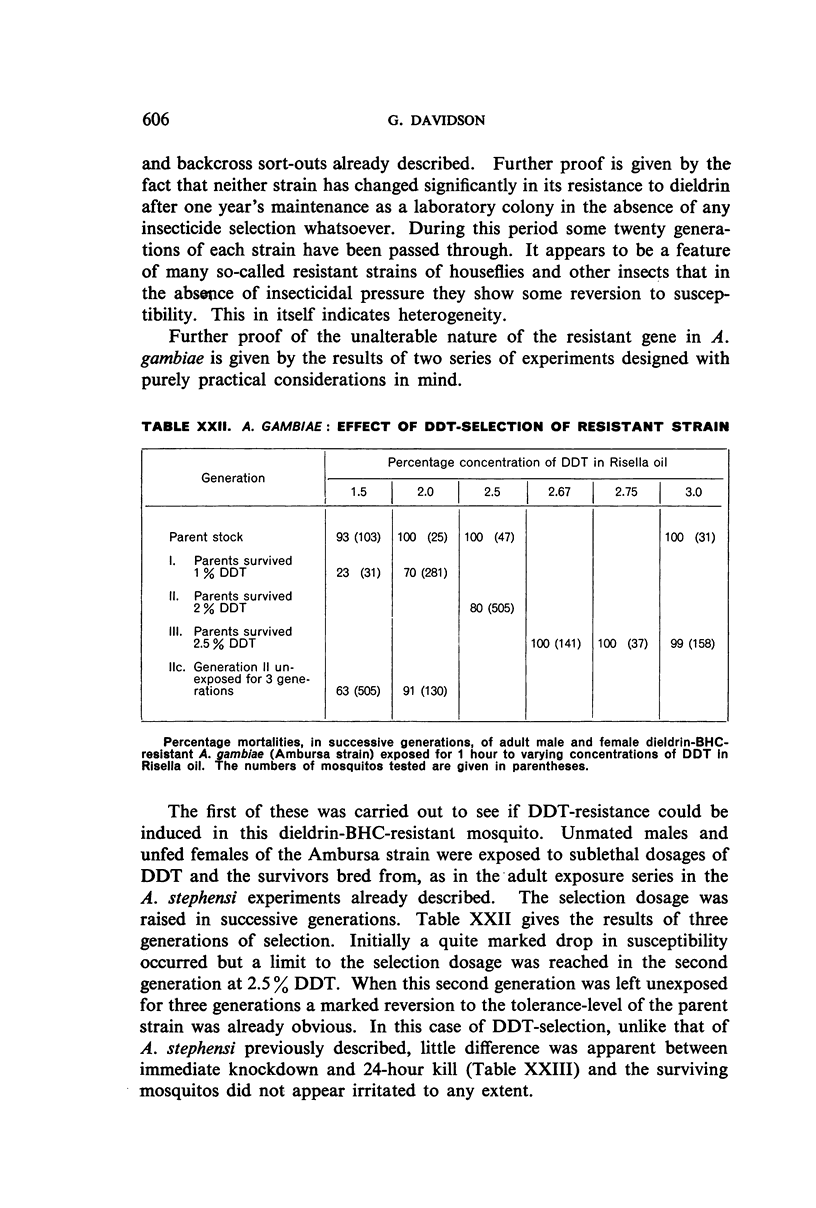

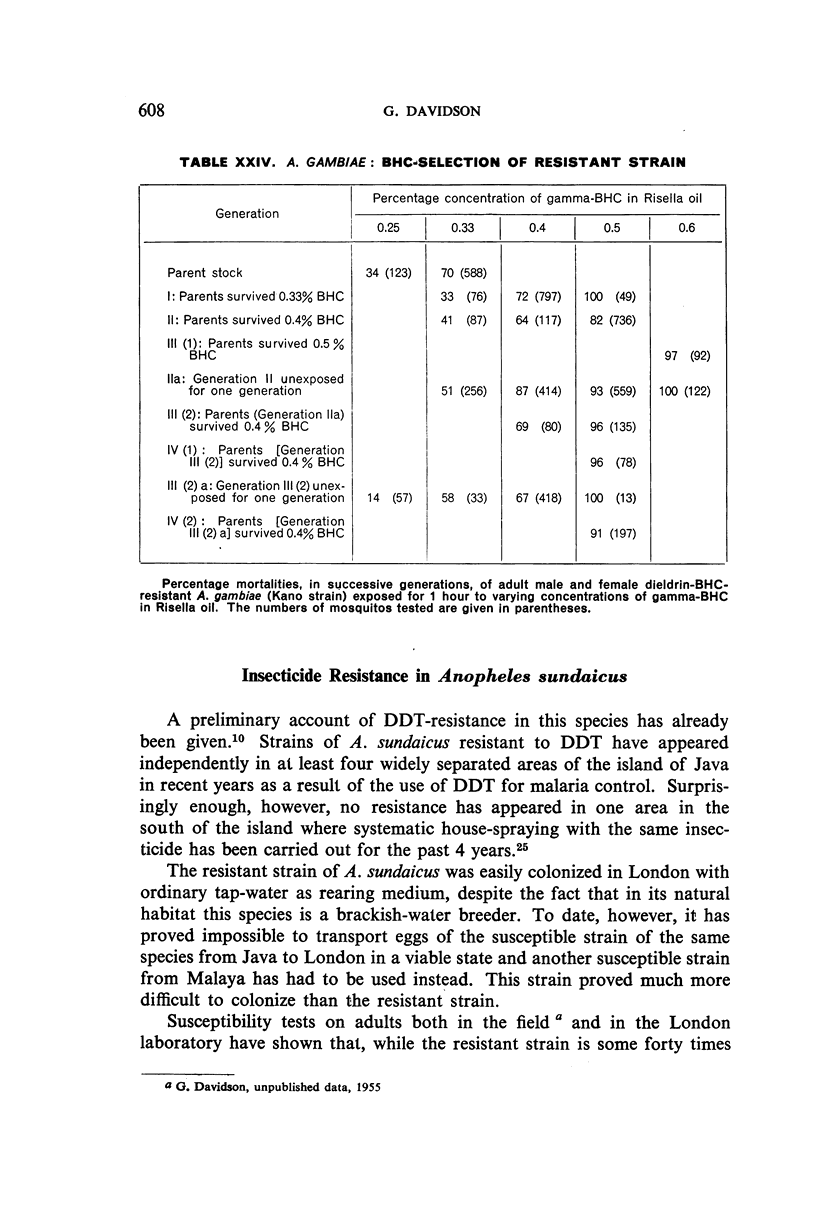

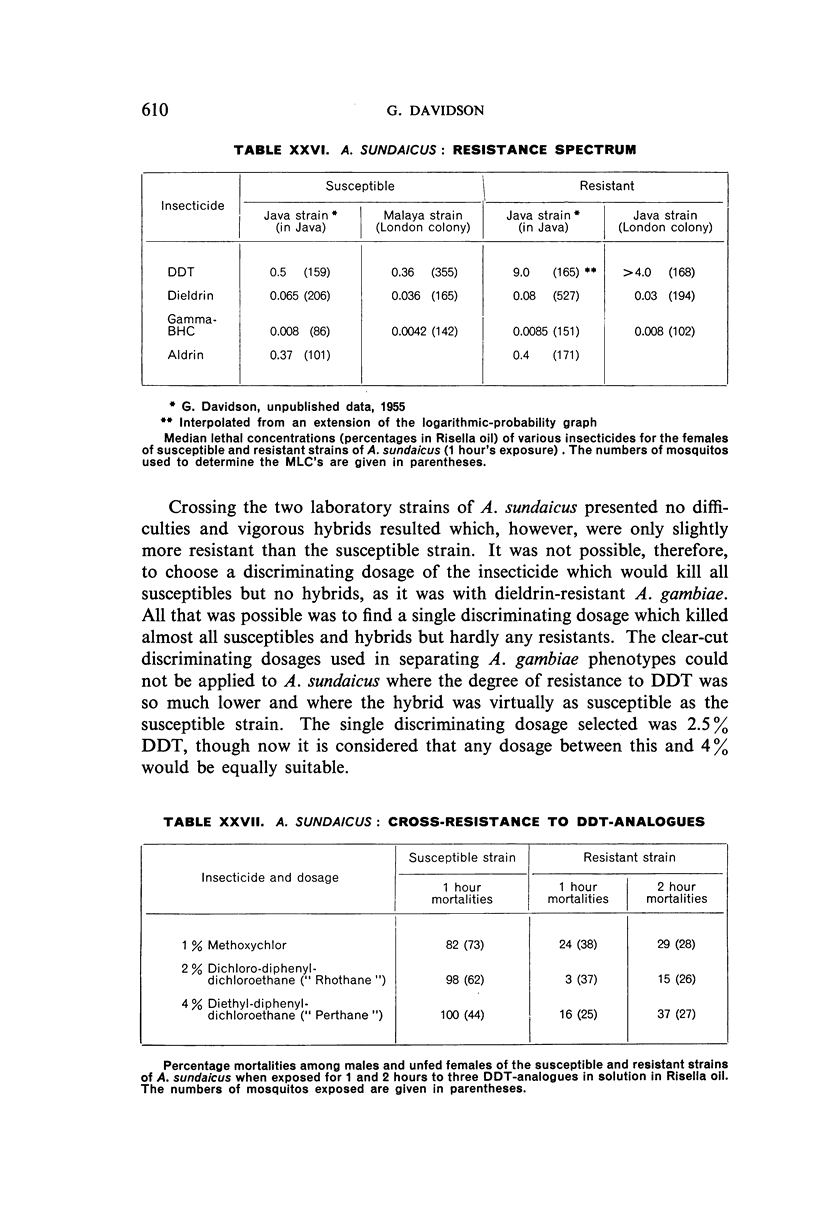
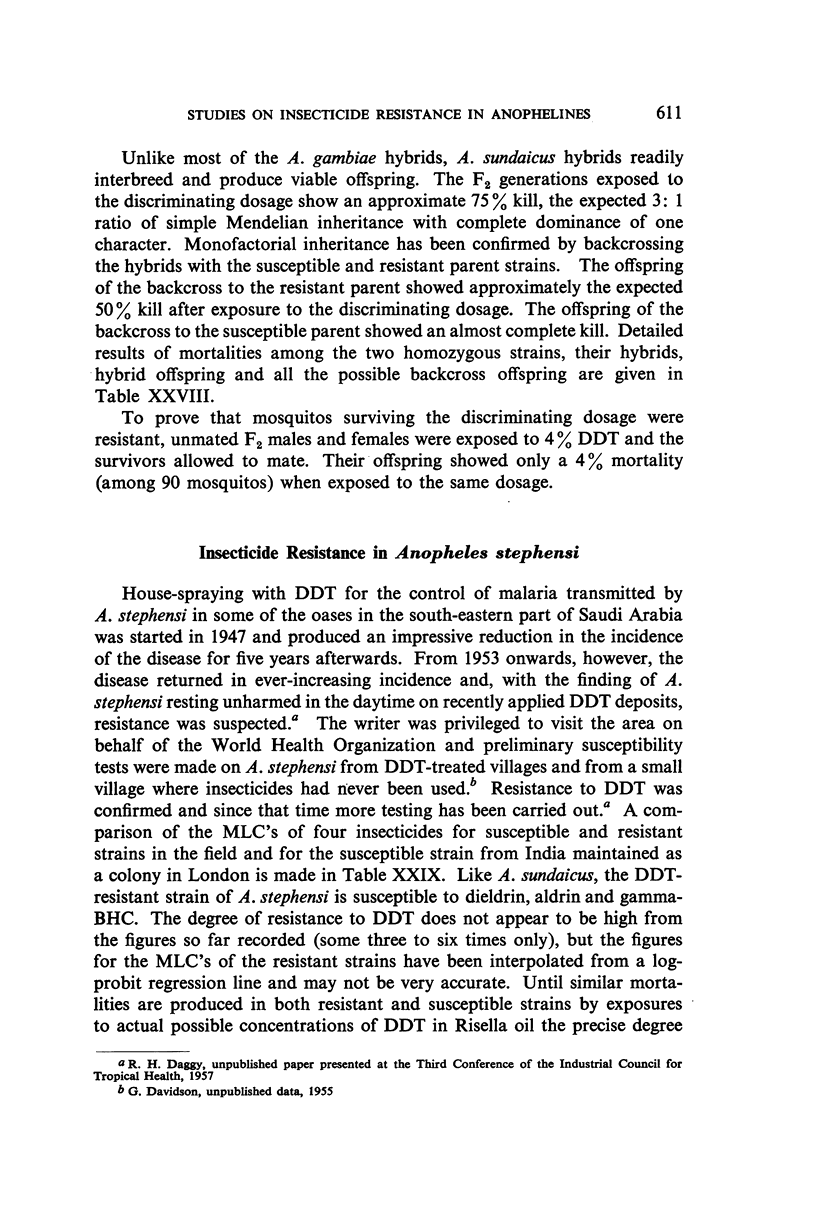
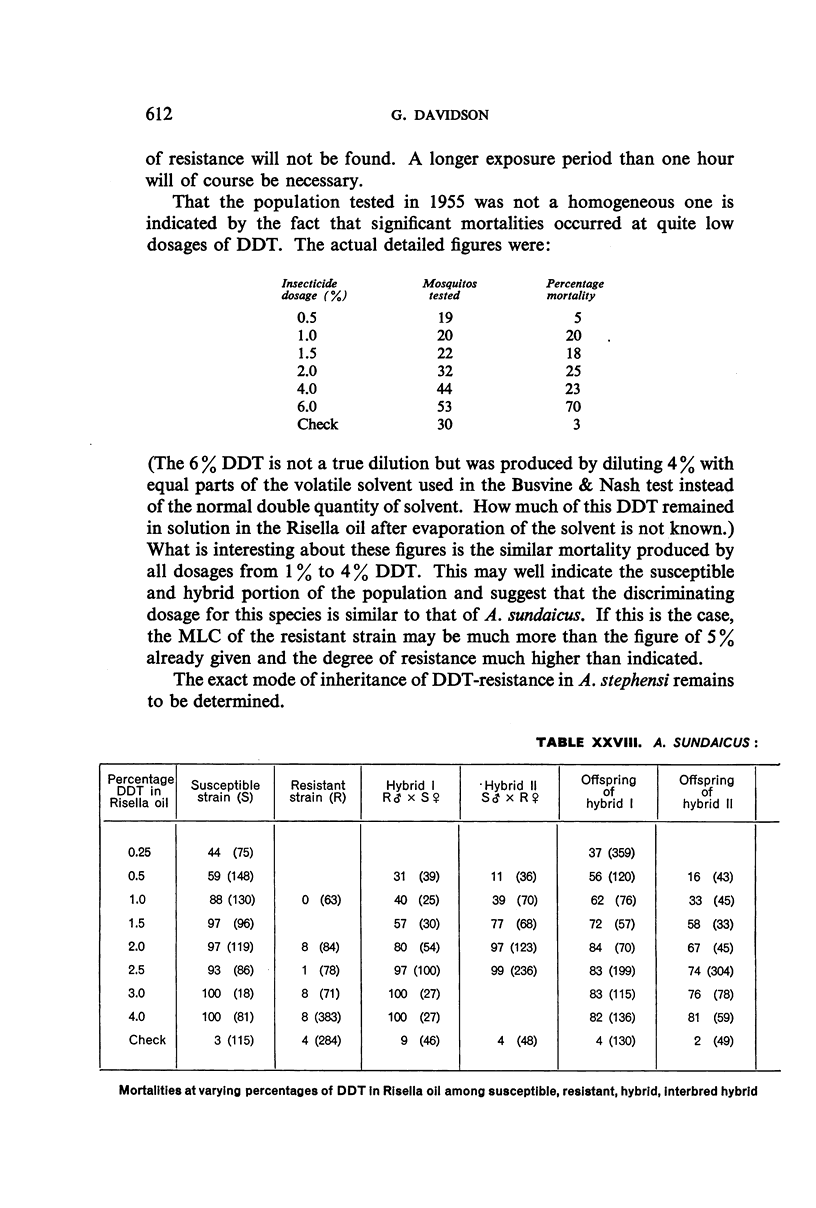
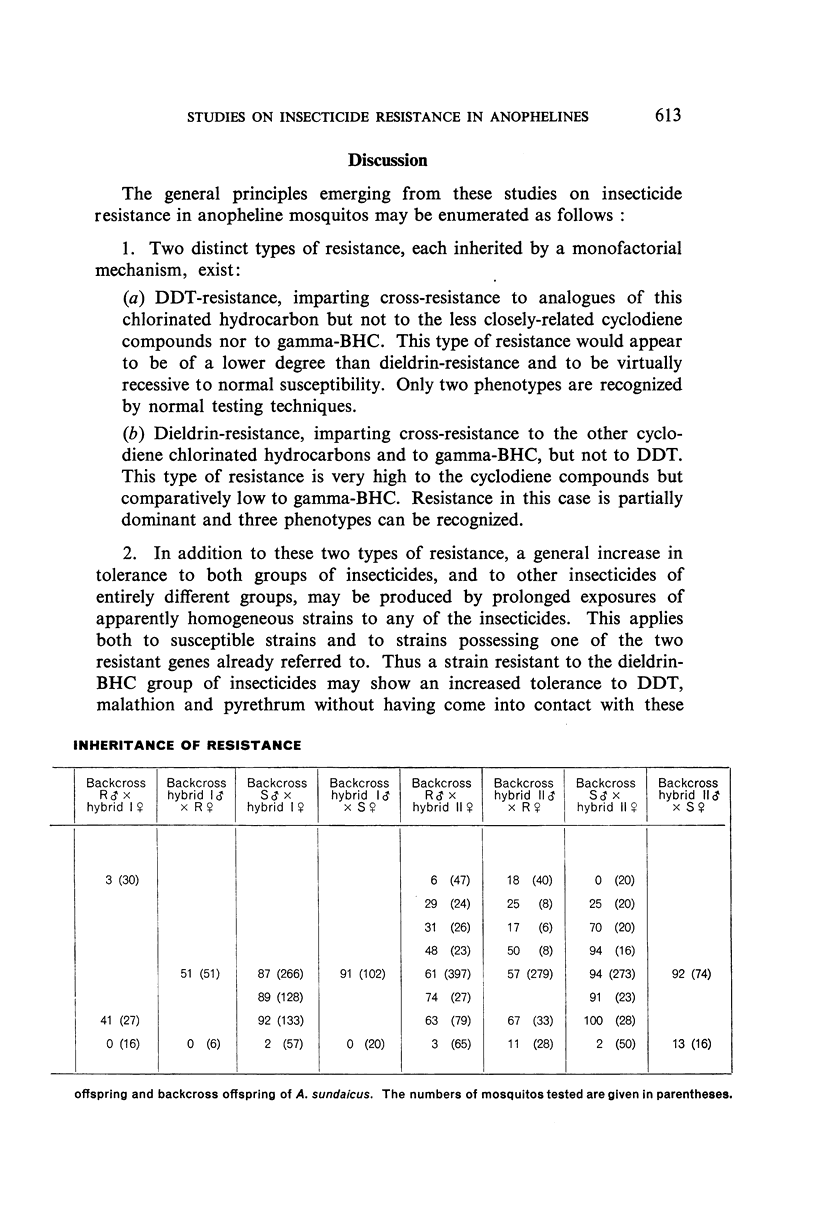
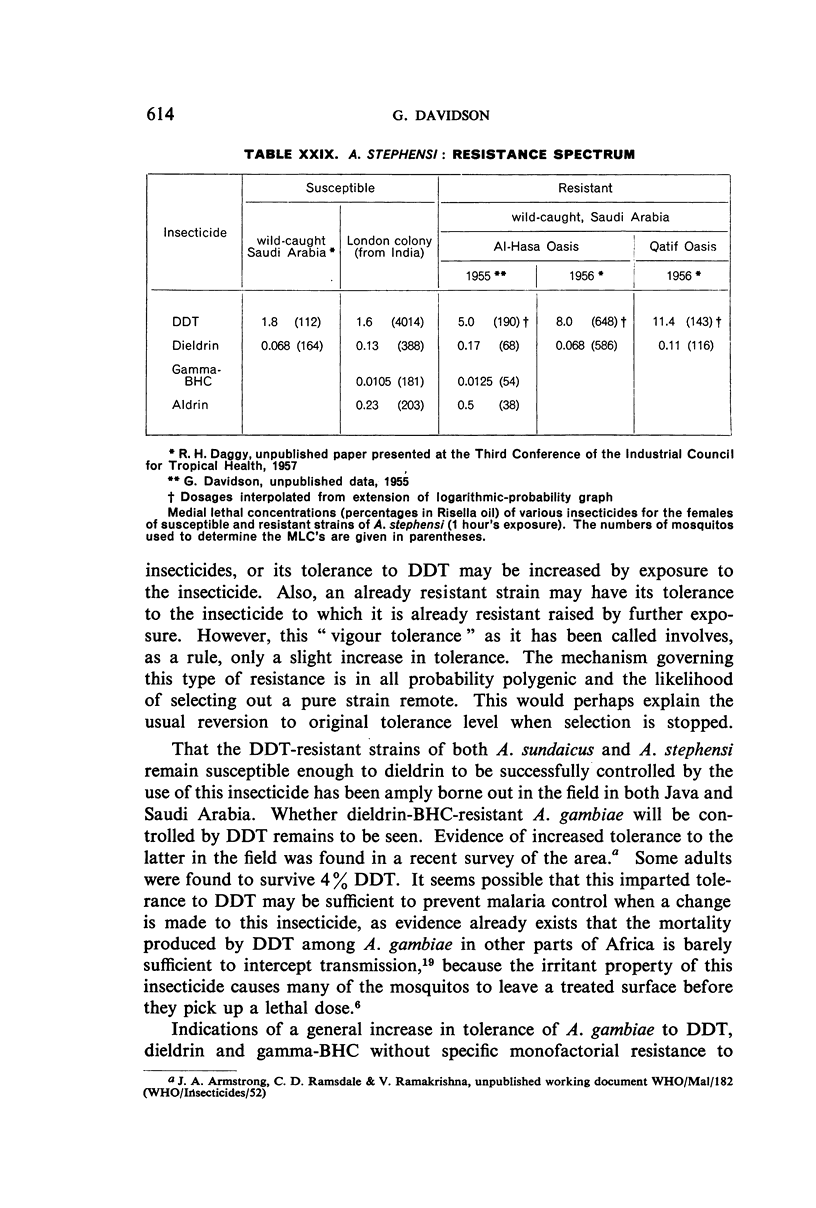
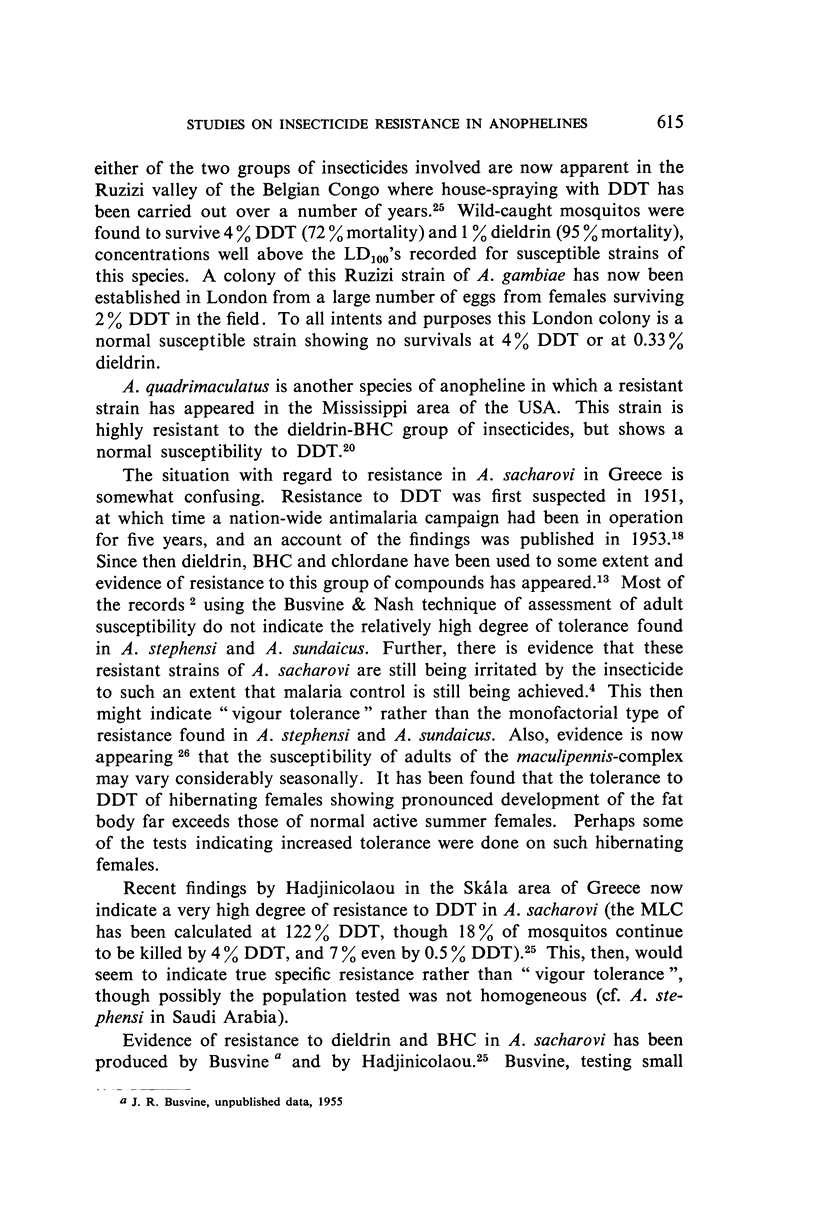
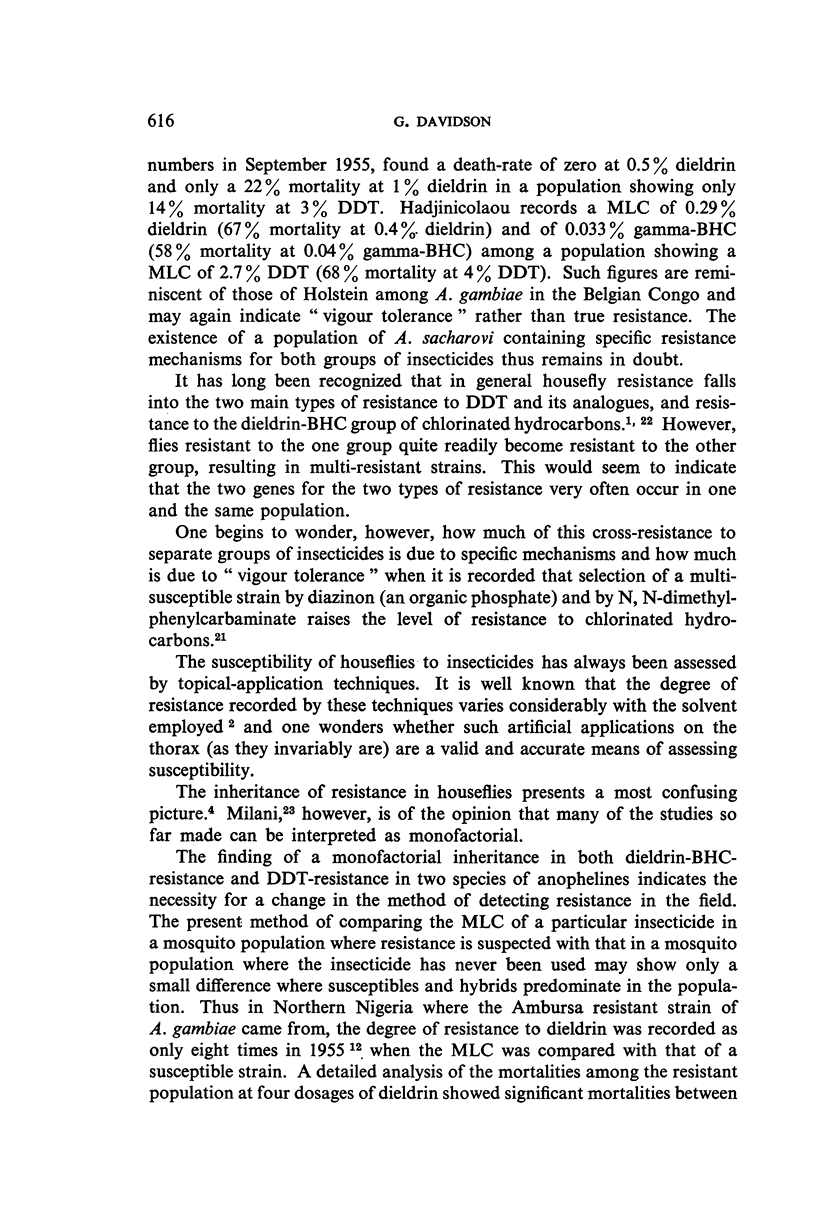
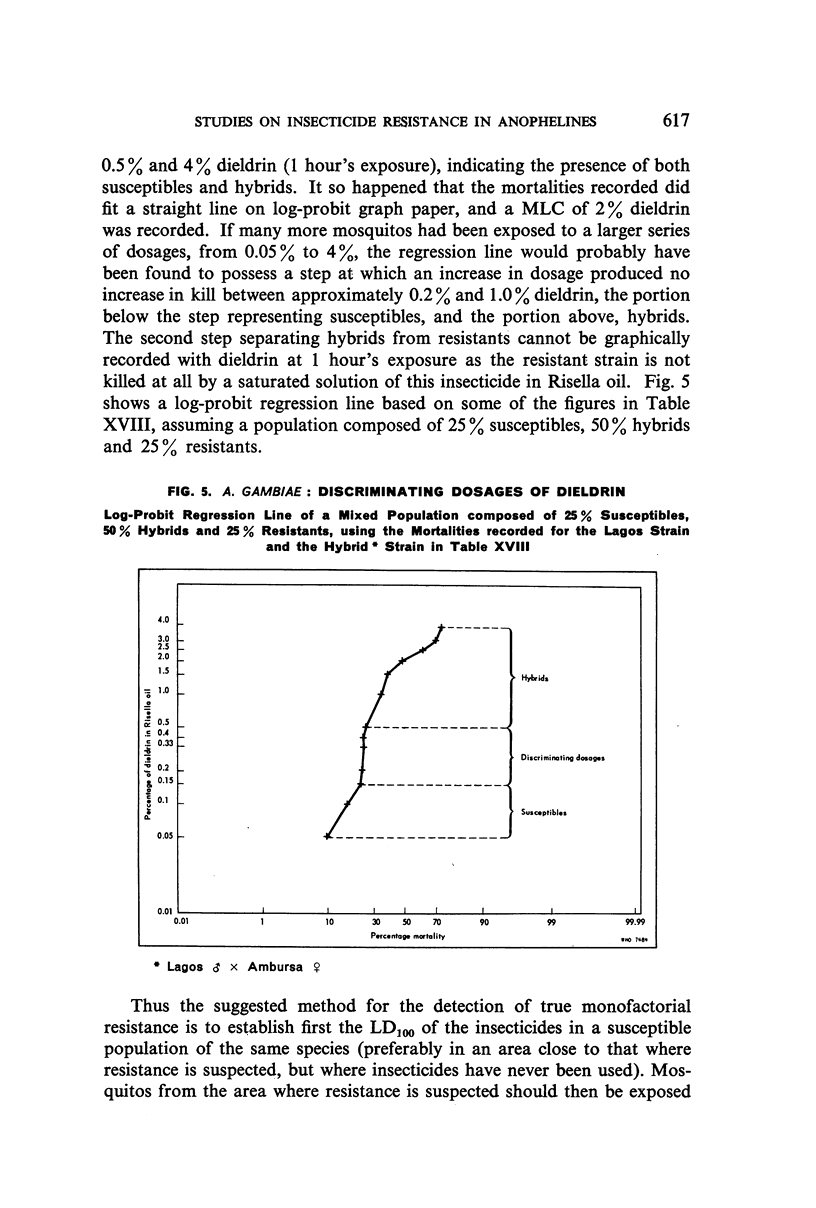
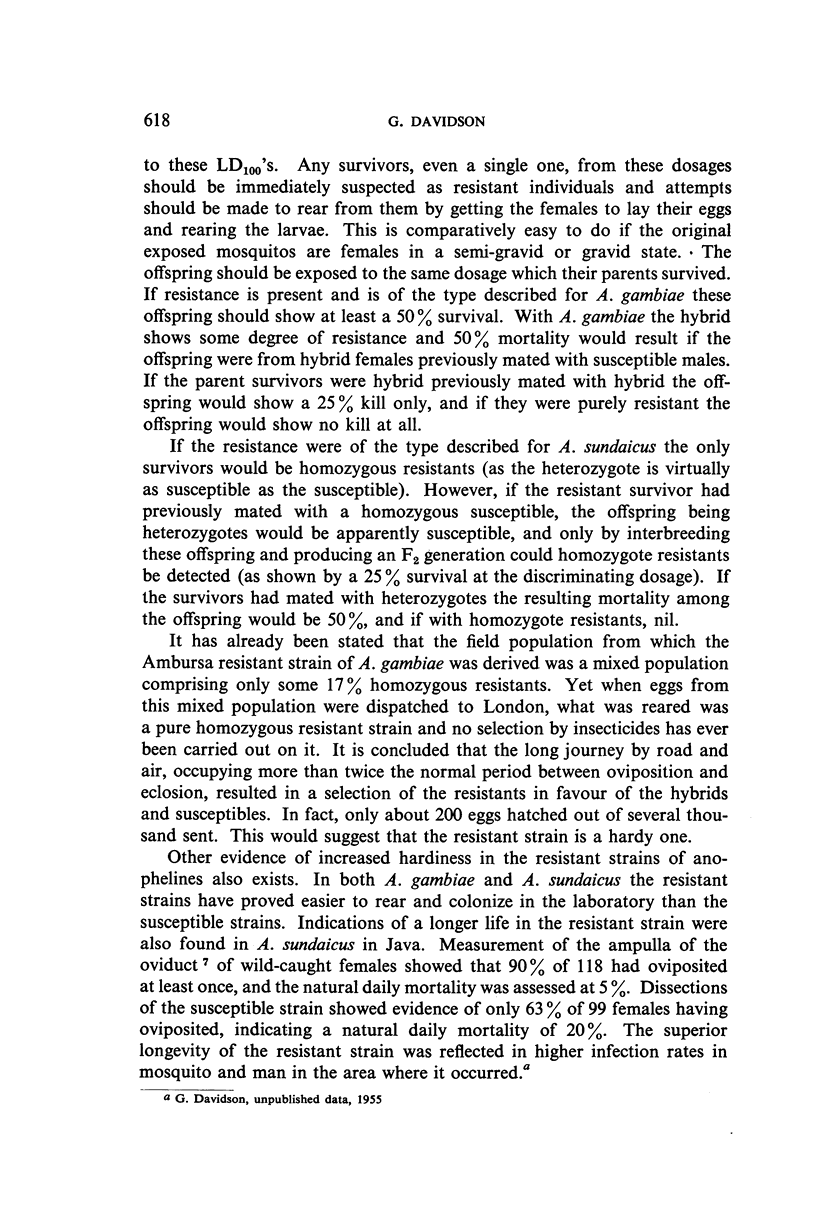
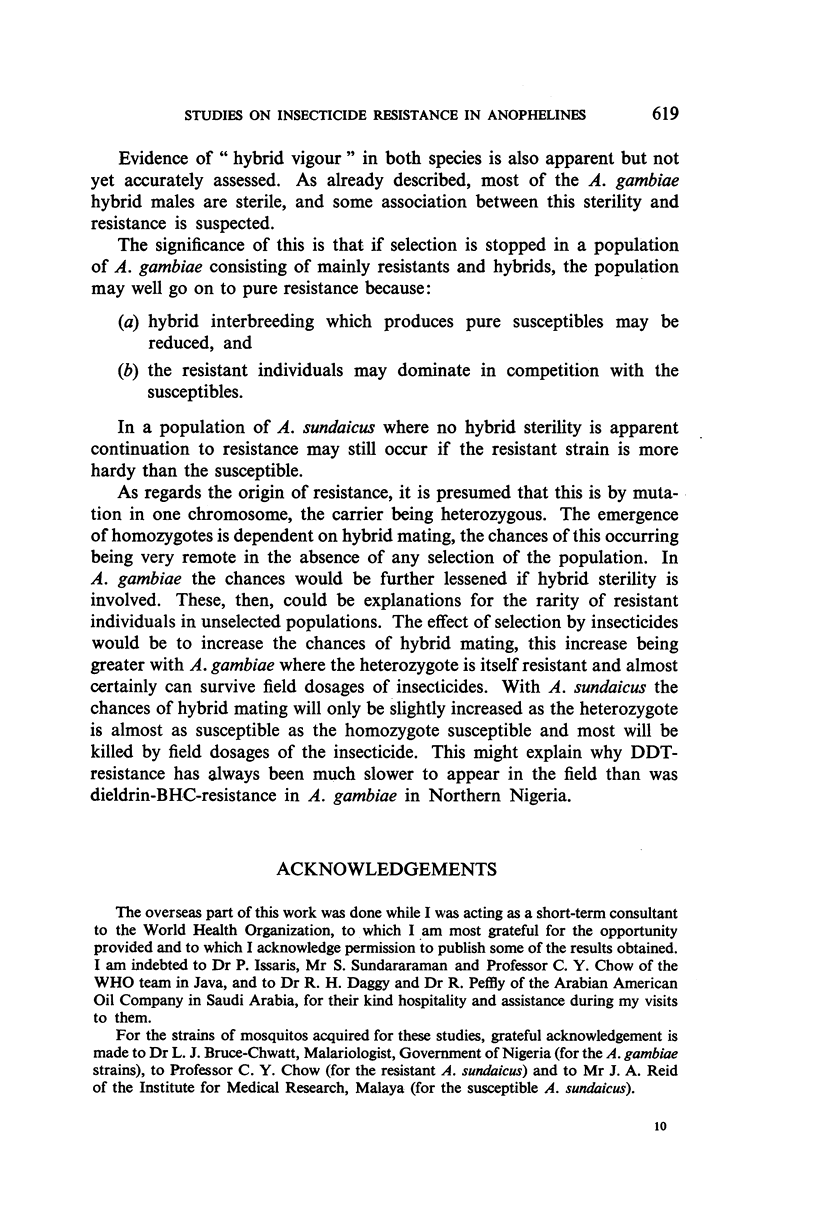
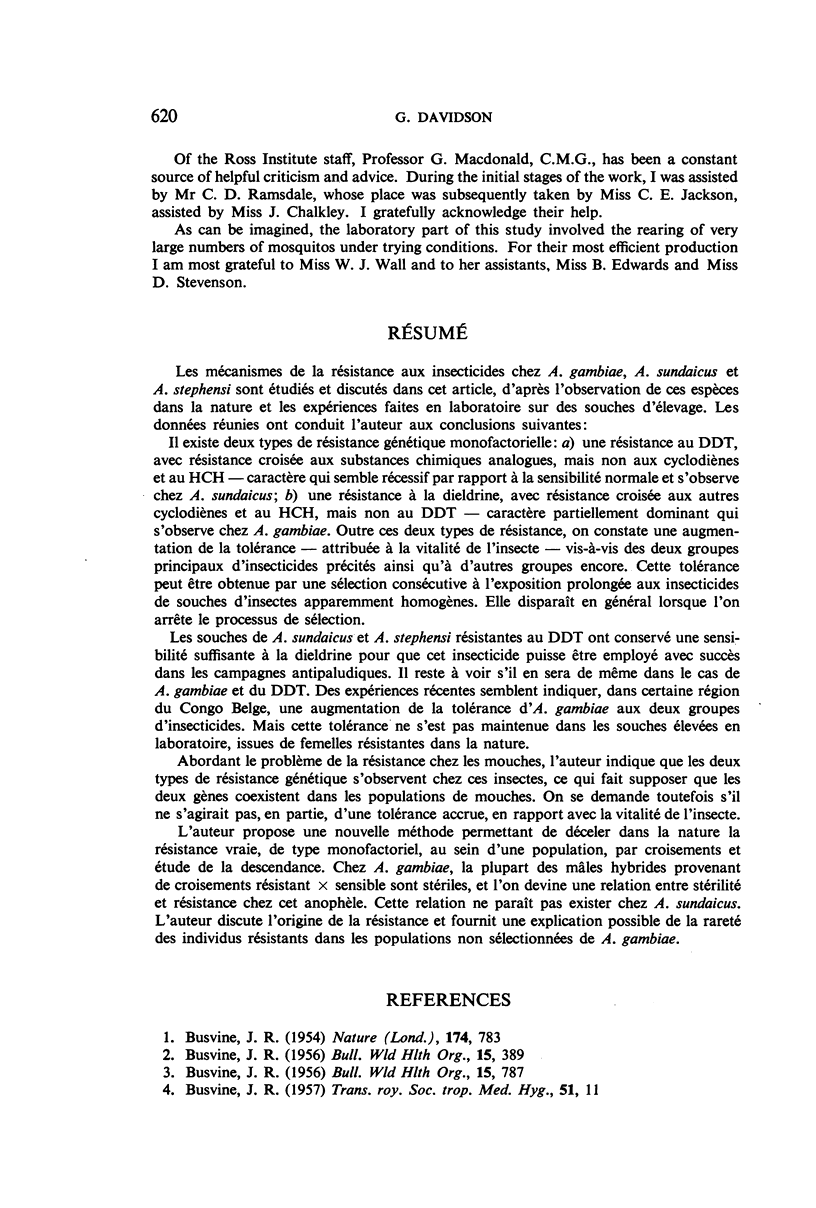
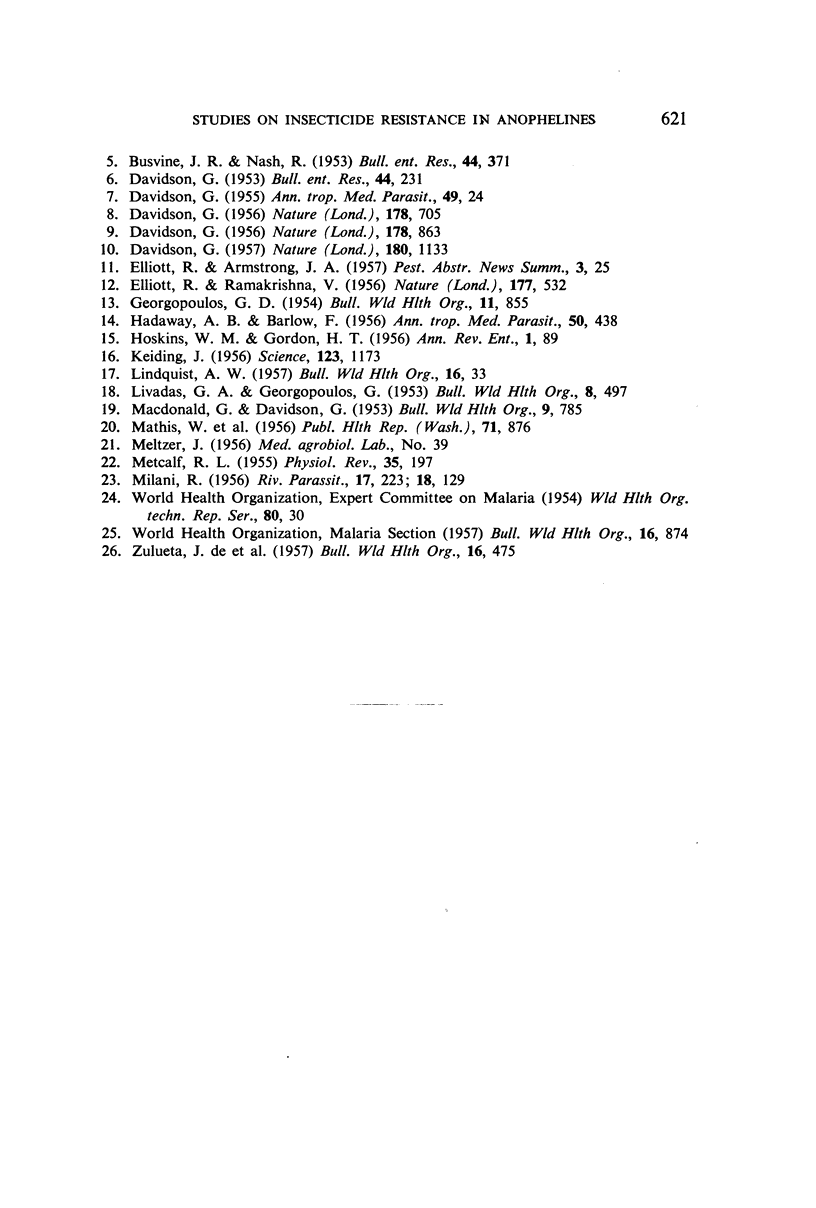
Selected References
These references are in PubMed. This may not be the complete list of references from this article.
- BARLOW F., HADAWAY A. B. Effects of age, sex and feeding on the susceptibility of mosquitoes to insecticides. Ann Trop Med Parasitol. 1956 Dec;50(4):438–443. doi: 10.1080/00034983.1956.11685786. [DOI] [PubMed] [Google Scholar]
- BUSVINE J. R. A survey of measurements of the susceptibility of different mosquitos to insecticides. Bull World Health Organ. 1956;15(3-5):787–791. [PMC free article] [PubMed] [Google Scholar]
- BUSVINE J. R. Houseflies resistant to a group of chlorinated hydrocarbon insecticides. Nature. 1954 Oct 23;174(4434):783–785. doi: 10.1038/174783a0. [DOI] [PubMed] [Google Scholar]
- BUSVINE J. R. Insecticide-resistant strains of insects of public health importance. Trans R Soc Trop Med Hyg. 1957 Jan;51(1):11-31; discussion, 32-6. doi: 10.1016/0035-9203(57)90002-0. [DOI] [PubMed] [Google Scholar]
- BUSVINE J. R. The significance of insecticide-resistant strains; with special reference to pests of medical importance. Bull World Health Organ. 1956;15(3-5):389–401. [PMC free article] [PubMed] [Google Scholar]
- DAVIDSON G. Insecticide resistance in Anopheles gambiae Giles: a case of simple mendelian inheritance. Nature. 1956 Oct 20;178(4538):863–864. doi: 10.1038/178863a0. [DOI] [PubMed] [Google Scholar]
- DAVIDSON G. Insecticide resistance in Anopheles gambiae giles. Nature. 1956 Sep 29;178(4535):705–706. doi: 10.1038/178705a0. [DOI] [PubMed] [Google Scholar]
- DAVIDSON G. Measurement of the ampulla of the oviduct as a means of determining the natural daily mortality of Anopheles gambiae. Ann Trop Med Parasitol. 1955 Mar;49(1):24–36. doi: 10.1080/00034983.1955.11685648. [DOI] [PubMed] [Google Scholar]
- DE ZULUETA J., JOLIVET P., THYMAKIS K., CAPRARI P. Seasonal variations in susceptibility to DDT of Anopheles maculipennis in Iran. Bull World Health Organ. 1957;16(2):475–479. [PMC free article] [PubMed] [Google Scholar]
- ELLIOTT R., RAMAKRISHNA V. Insecticide resistance in Anopheles gambiae Giles. Nature. 1956 Mar 17;177(4507):532–533. doi: 10.1038/177532a0. [DOI] [PubMed] [Google Scholar]
- FAY R. W., MATHIS W., QUARTERMAN K. D., SCHOOF H. F. Insecticide resistance of A. quadrimaculatus in Bolivar County, Mississippi. Public Health Rep. 1956 Sep;71(9):876–878. [PMC free article] [PubMed] [Google Scholar]
- GEORGOPOULOS G. D. Extension to chlordane of the resistance to DDT observed in Anopheles sacharovi. Bull World Health Organ. 1954;11(4-5):855–864. [PMC free article] [PubMed] [Google Scholar]
- KEIDING J. Resistance to organic phosphorus insecticides of the housefly. Science. 1956 Jun 29;123(3209):1173–1174. doi: 10.1126/science.123.3209.1173. [DOI] [PubMed] [Google Scholar]
- LIVADAS G. A., GEORGOPOULOS G. Development of resistance to DDT by Anopheles sacharovi in Greece. Bull World Health Organ. 1953;8(4):497–511. [PMC free article] [PubMed] [Google Scholar]
- MACDONALD G., DAVIDSON G. Dose and cycle of insecticide applications in the control of malaria. Bull World Health Organ. 1953;9(6):785–812. [PMC free article] [PubMed] [Google Scholar]
- METCALF R. L. Physiological basis for insect resistance to insecticides. Physiol Rev. 1955 Jan;35(1):197–232. doi: 10.1152/physrev.1955.35.1.197. [DOI] [PubMed] [Google Scholar]


